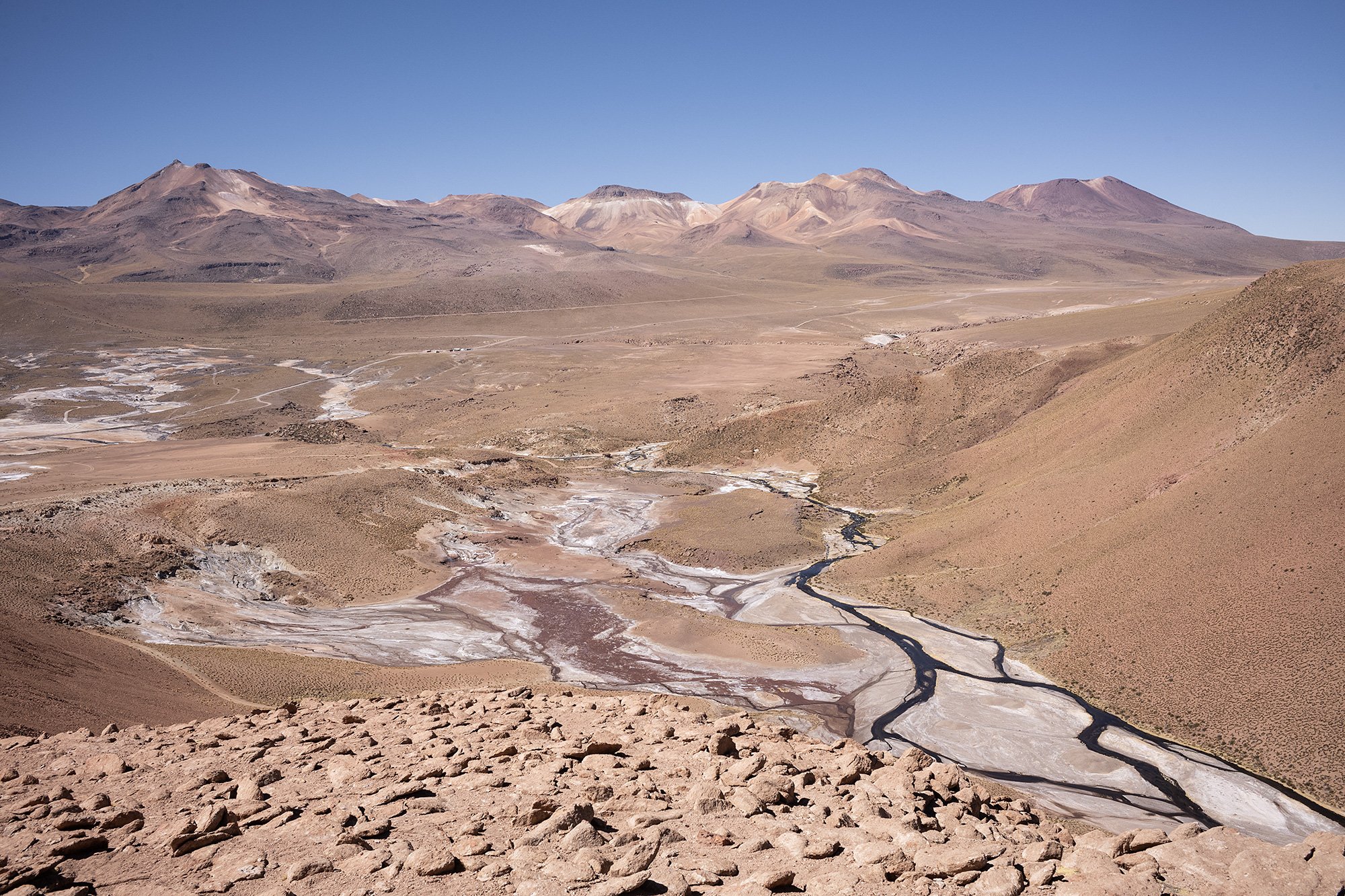
Atacama chapter three
The breathtaking Volcan Blanco hike.
It’s another early morning as I eat a leisurely breakfast before meeting our guide. We’ve to hike through a valley of geysers to Volcan Blanco and beyond, covering around 8 km and hovering at an altitude of of 4,200 meters.
The “volcano” in the name is a misnomer. It’s a white hill near the midpoint of the journey, and so-named because it was once mistaken for a volcano by the locals. The name has since stuck.
We’re a small group on the hike: our guide Michelle and a couple from Santiago who had completed the hot spring hike with me the day before. He’s an ophthalmologist and she’s a writer whose written a book on the invertebrates of Chile. She’s now working on a book of river animals.
I ask if I can purchase her book in the states or in Buenos Aires; they tell me it’s available digitally on Amazon, but you’d lose all the illustrations. Later, they find out I’ll be spending a night in Santiago on my way back to Buenos Aires. He tells me he’ll be flying out early the day I arrive in Santiago and offers to leave a copy of the book at the hotel for me. I thank them profusely; I can’t wait to read the book.
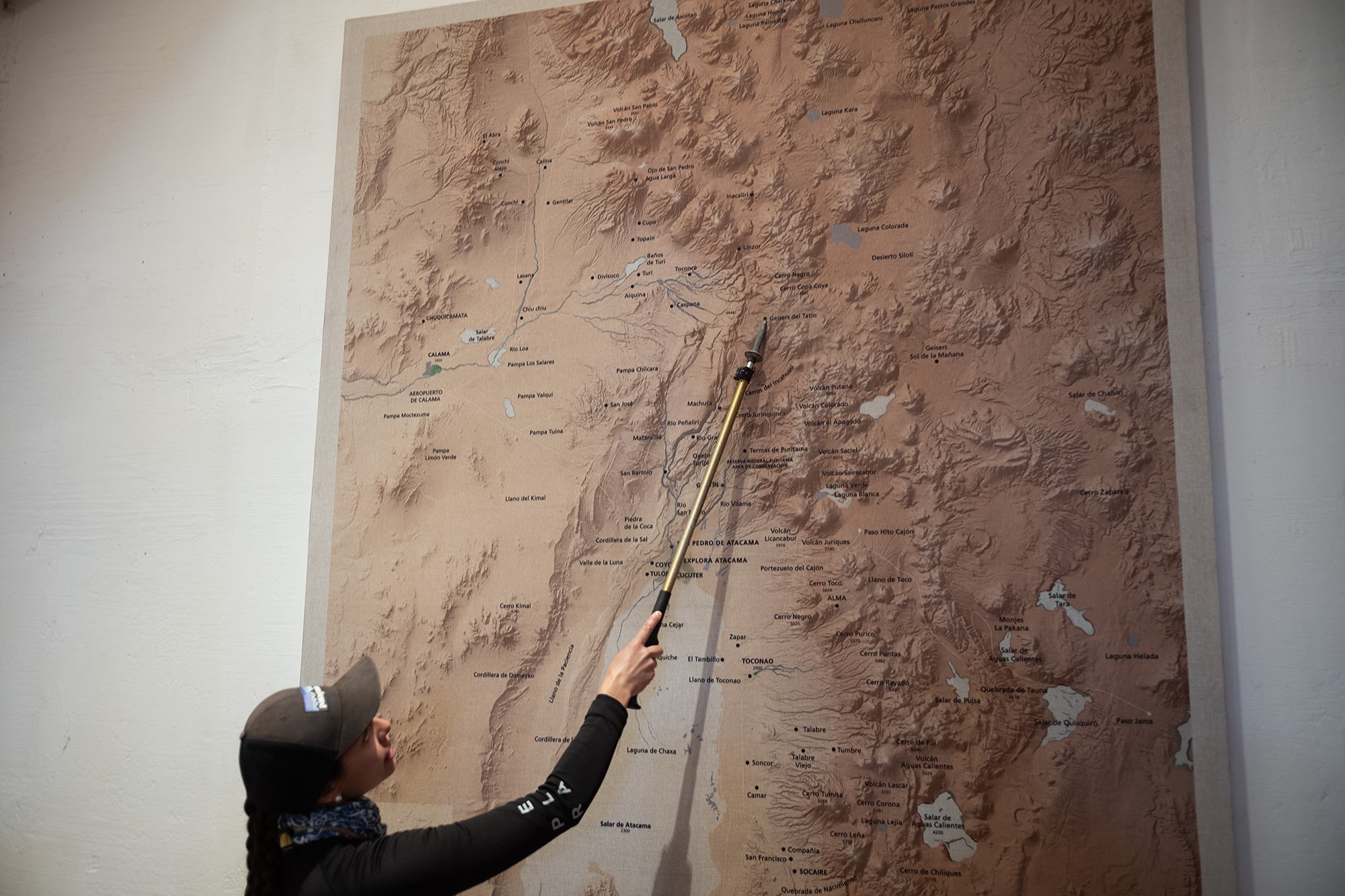
After Michelle briefs us at the large map in reception we collect our hiking poles and head to the car. It’s a bit of a drive to the Tatio geysers, which mark our first stop. As we chat in the car we discover it’s Sebastian and Maria’s 21st wedding anniversary; congratulations are proffered and we are immediately put in a celebratory mood as we drive towards our first destination.
Along the way, we pass wetlands and pause by the side of the road to look at flamingos and other birds that have called the high plains their home. We’ve crossed 4,000 meters in elevation and Michelle encourages us to keep drinking water and to bundle up as we exit the car for better views of the various birds that dot the frozen ponds.
As we chat in the car they tell us it’s their 21st wedding anniversary; congratulations are expressed and it immediately puts us in a celebratory mood as we drive towards our first destination.
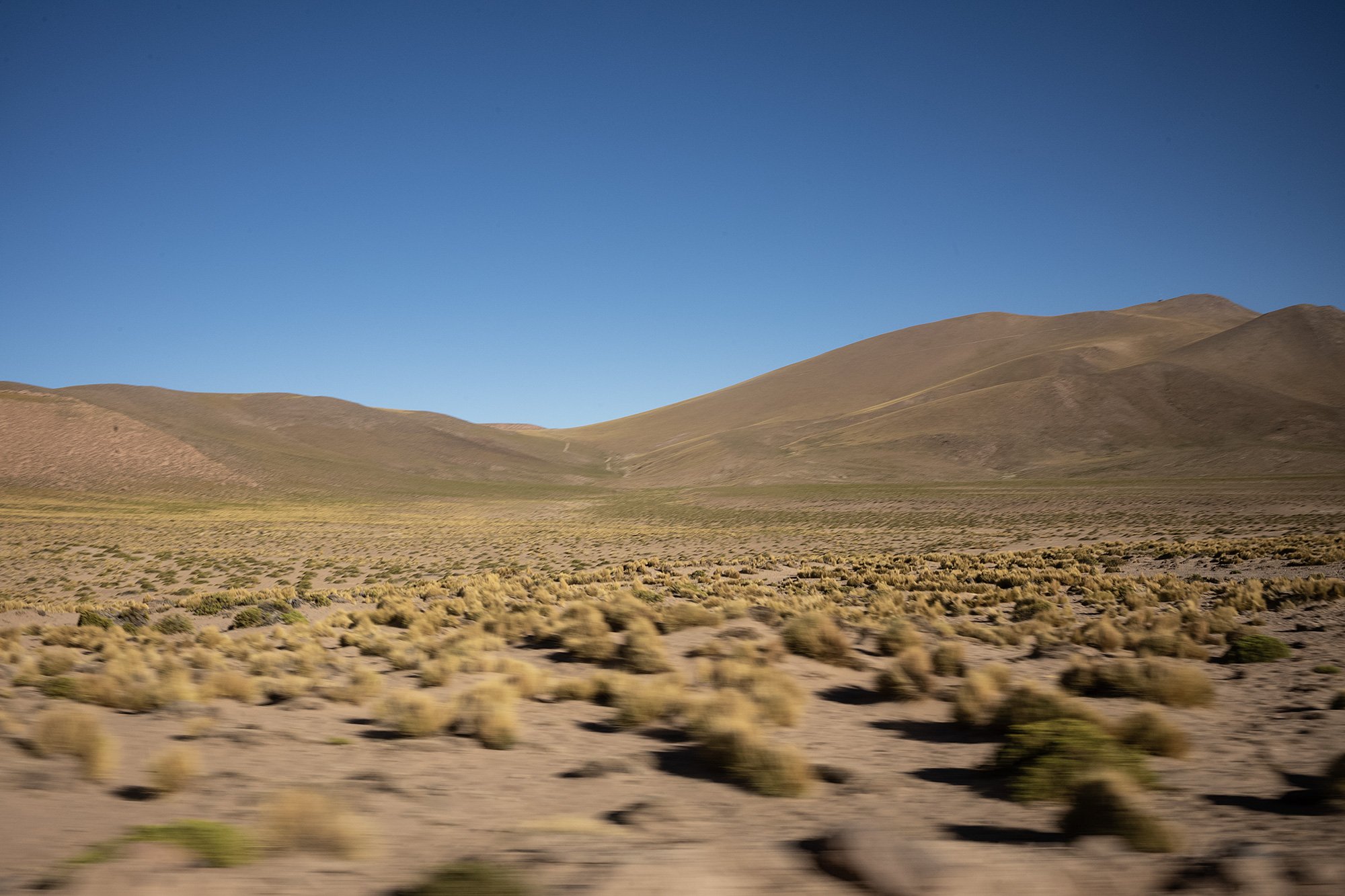
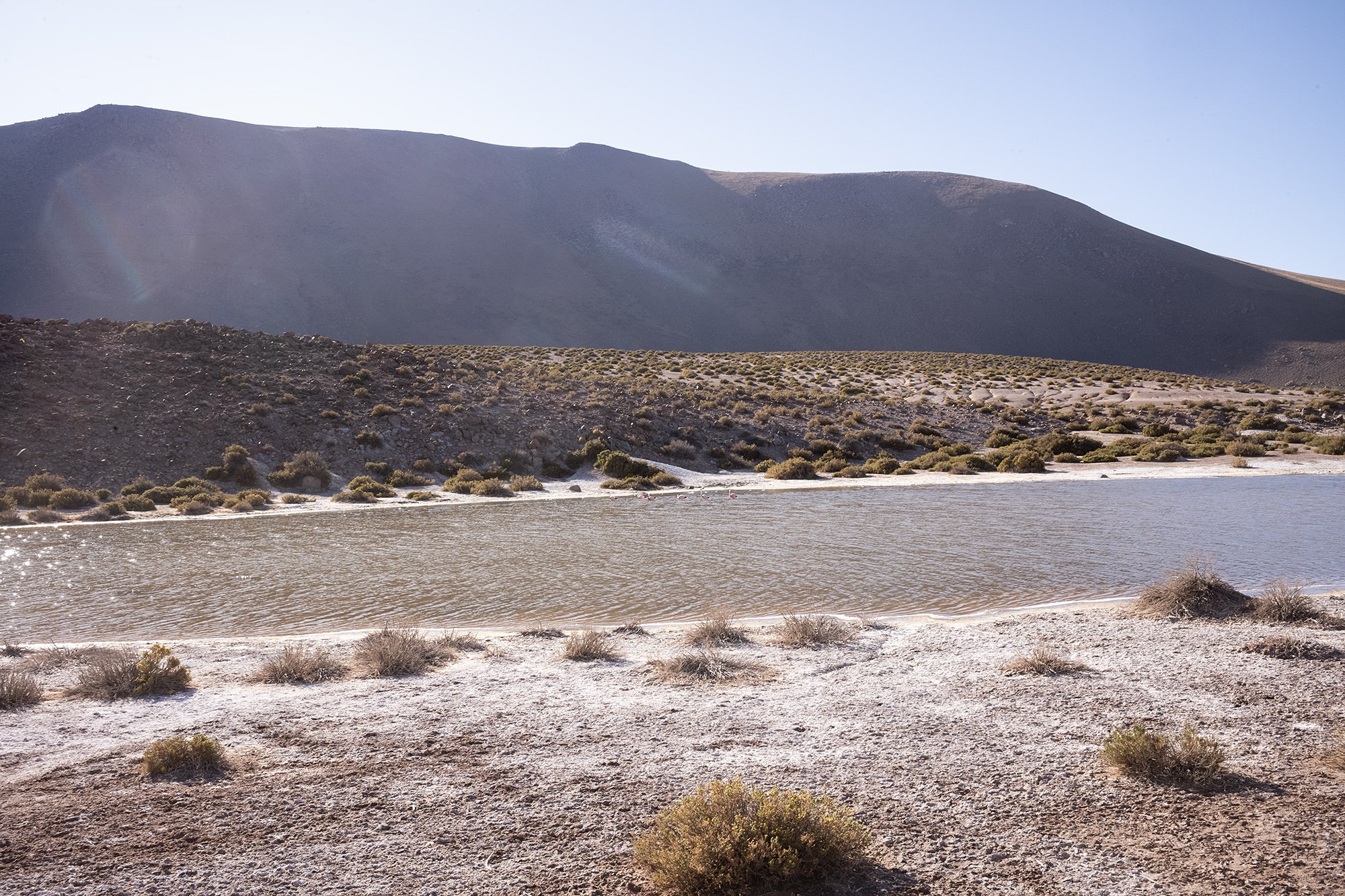
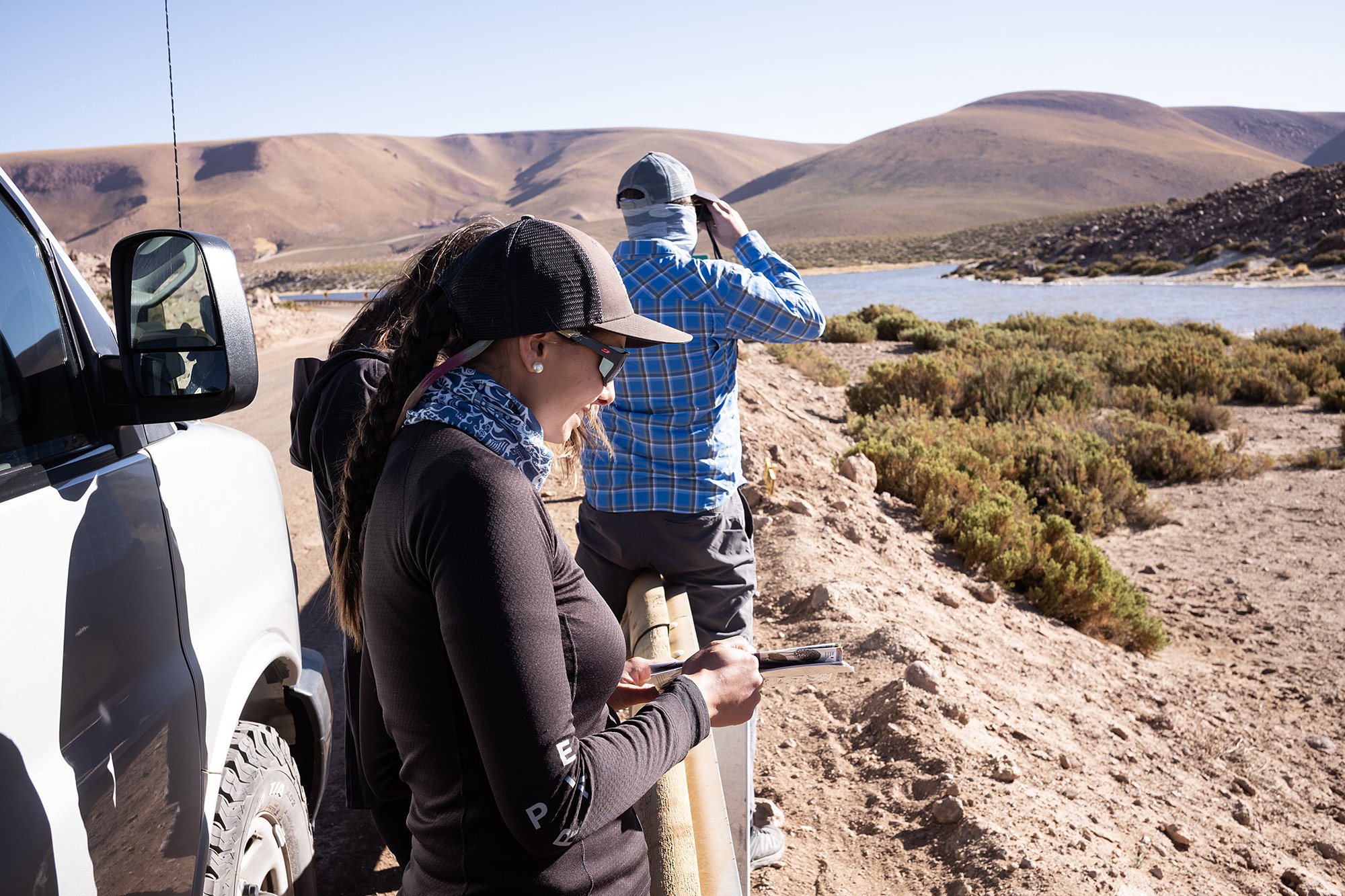

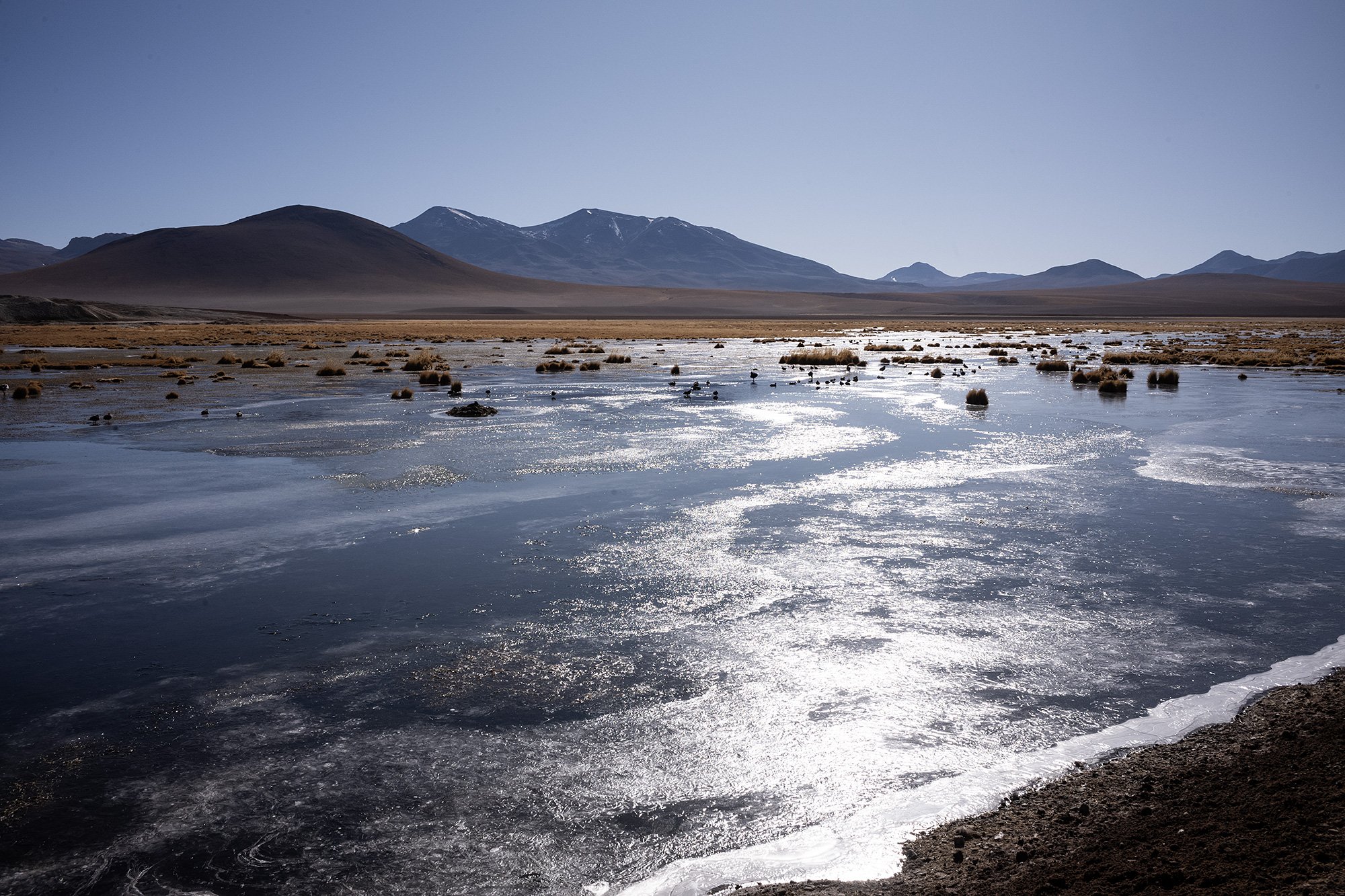
At the Tatio geysers we alight. Michelle tells us not to touch the water and to be careful around the geysers themselves. They bubble but don’t erupt and we walk to the edges of some to get a better view of the colors of the rock and of the mineral deposits that texture the edges of the pools. Michelle explains how the different geysers are formed, diagramming the underground caverns that collect the water and describes how the water either boils or erupts from fissures in the ground.
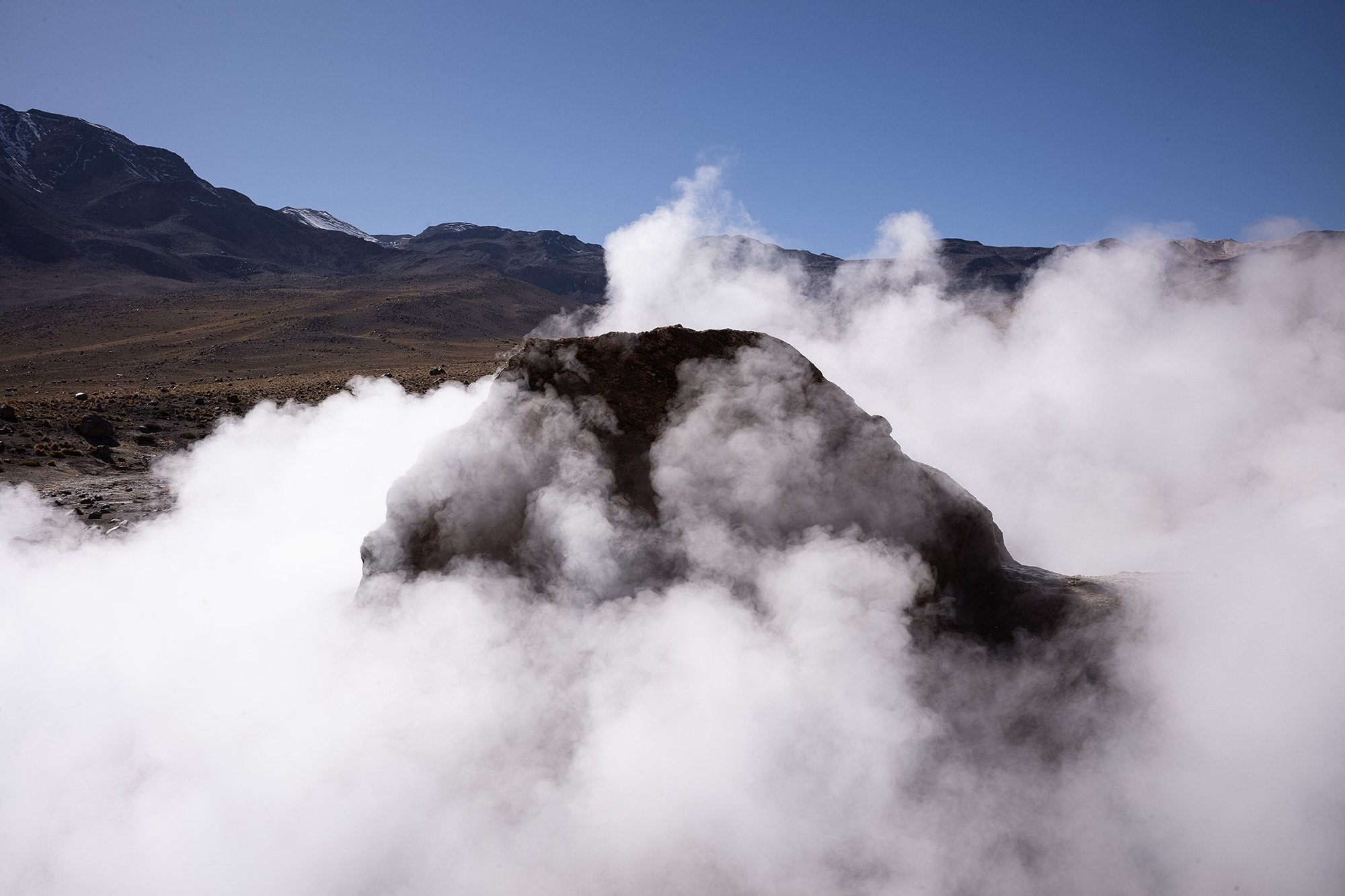
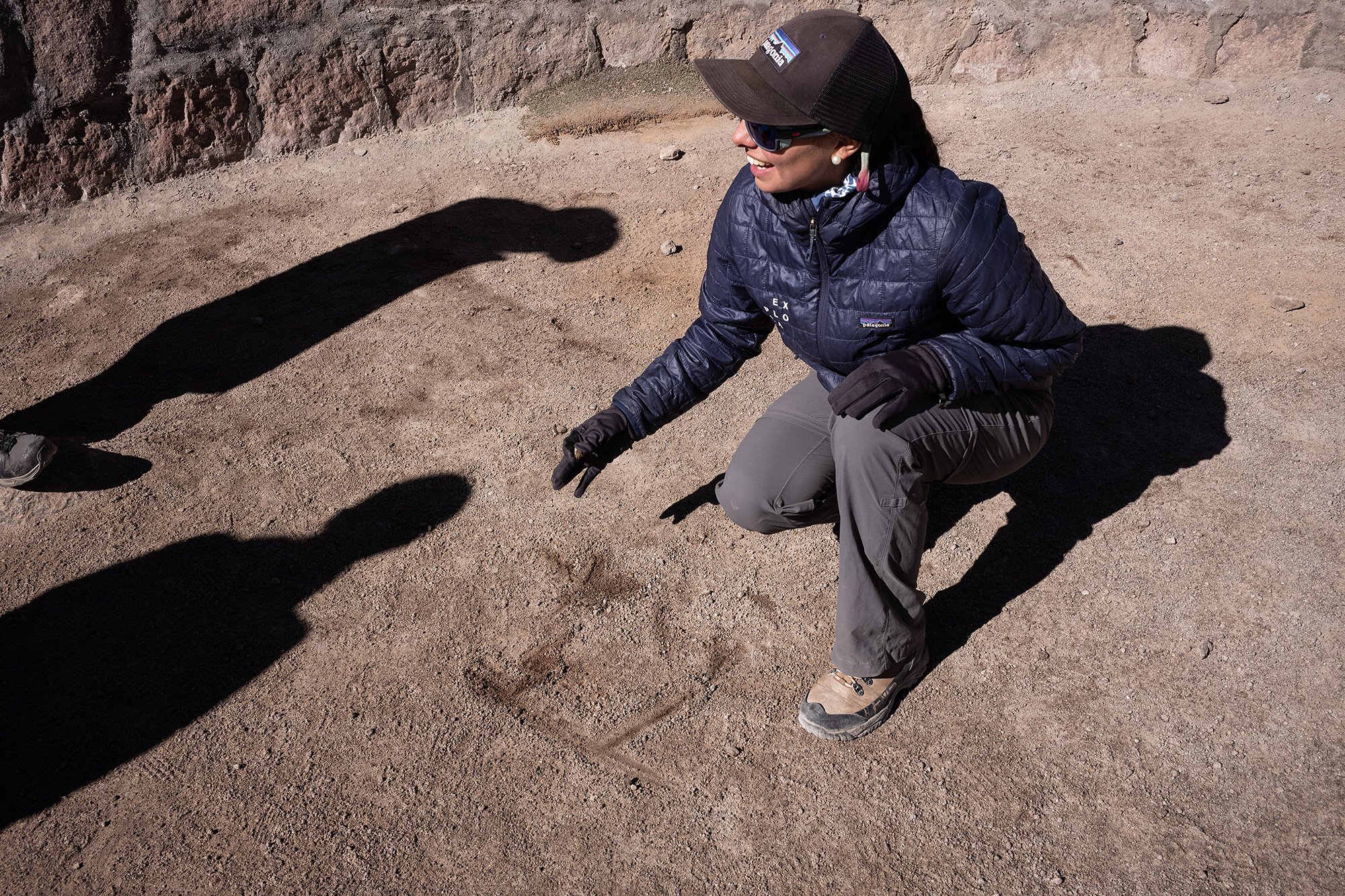
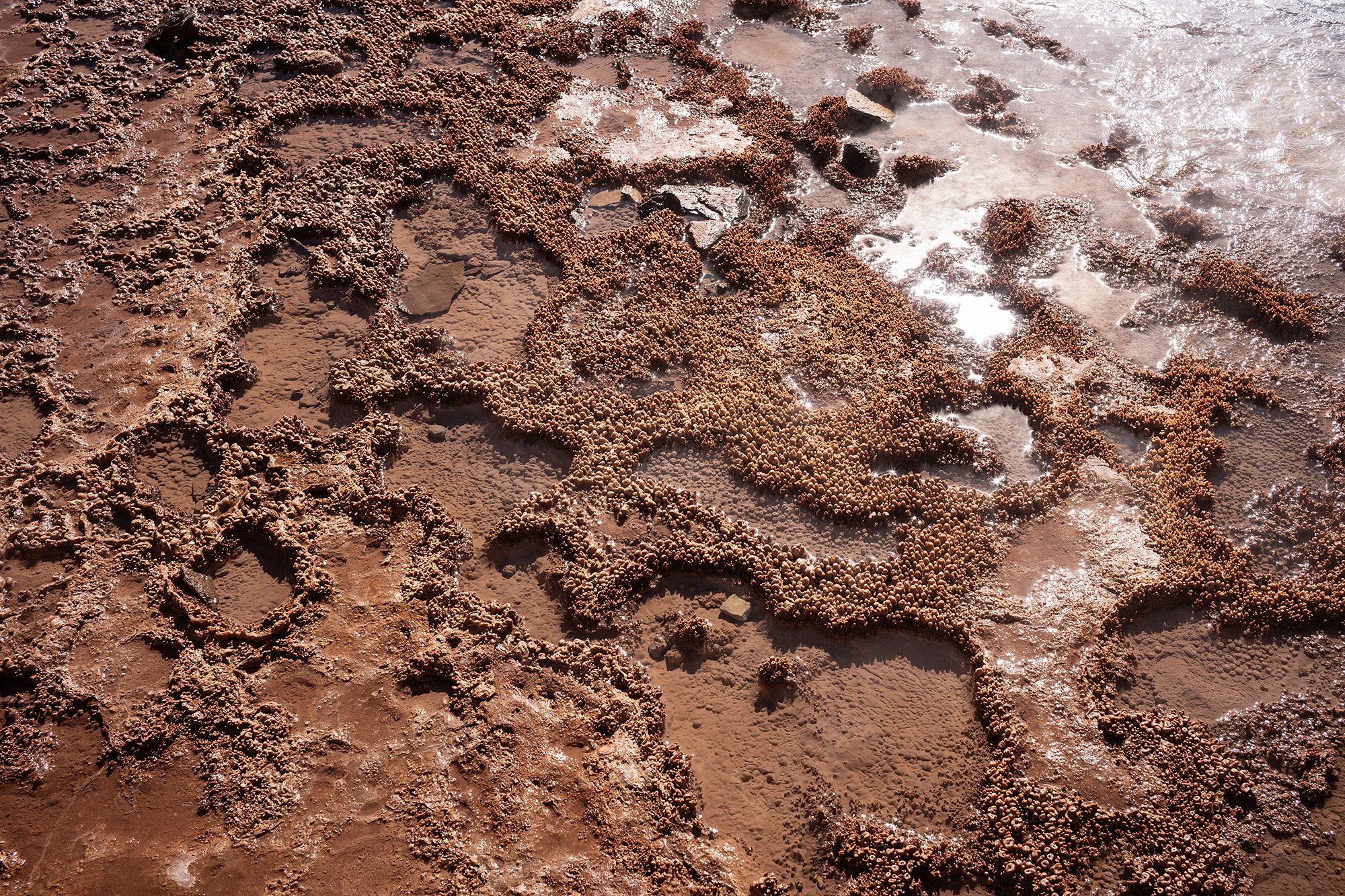
Walking further along the fields we pause by a small stream that has formed. Michelle points out the vegetation growing in the stream and the small frogs that call this ecosystem home. Maria spends some time crouched by the stream observing the frogs. We spot two larger frogs hiding along the banks, one clinging to the other. Michelle tells us she had seen them here the other day; Maria exhibits a keen interest.
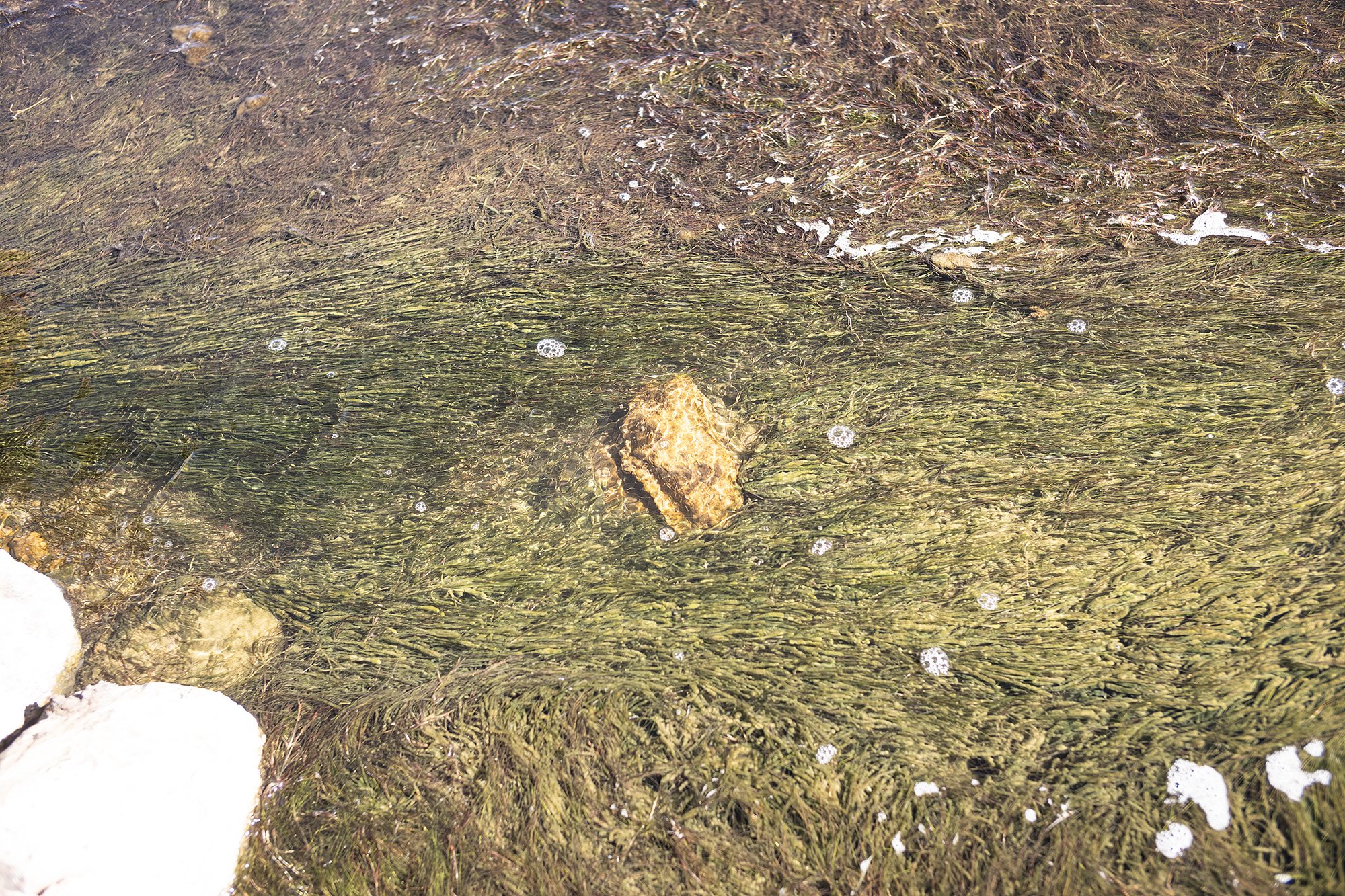

The area around the Taito geysers is large and flat and Michelle lets us take our time crossing the rest of the plain. The van has pulled from one parking lot to another and we can see it as we make our way there.
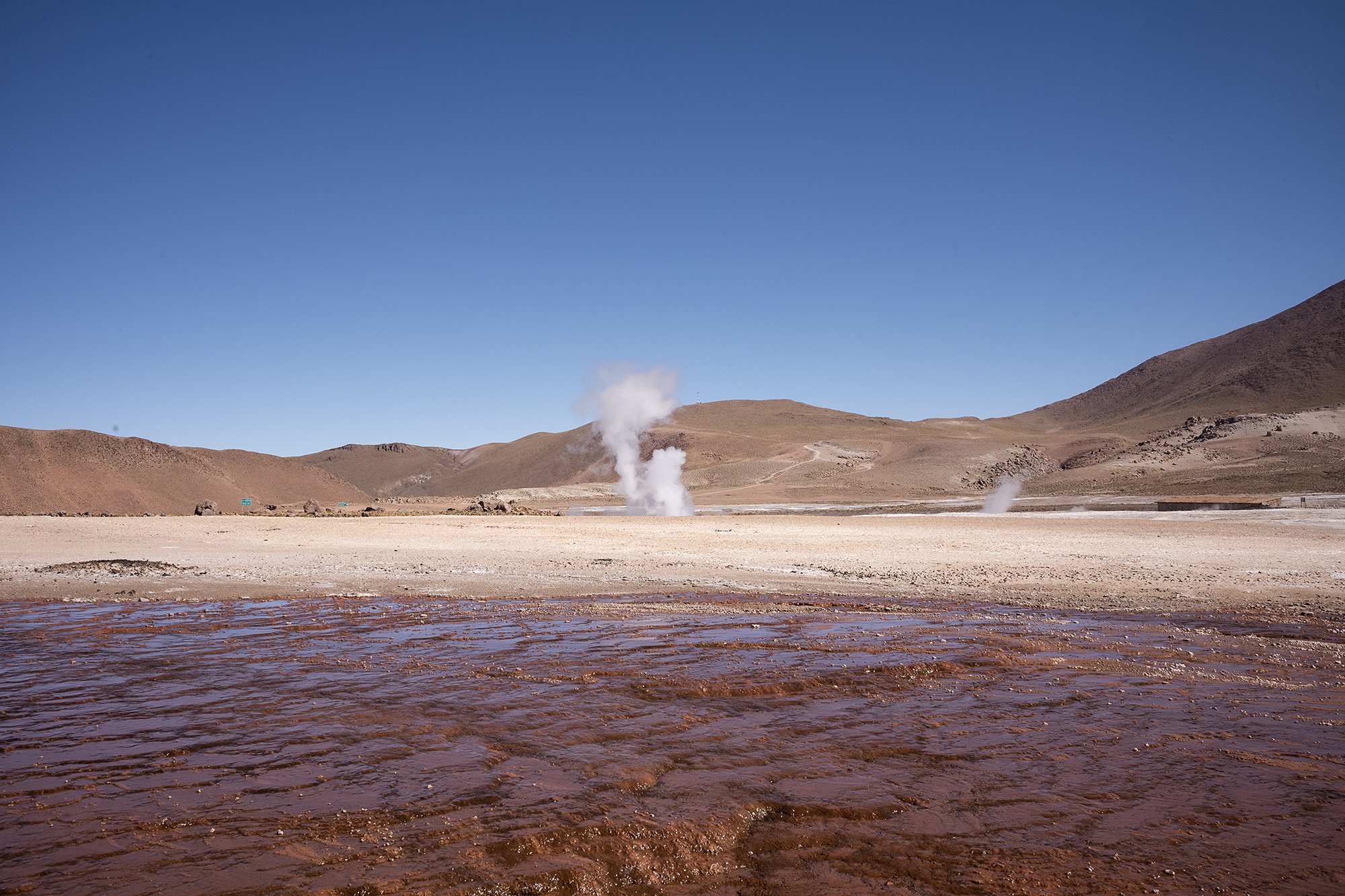
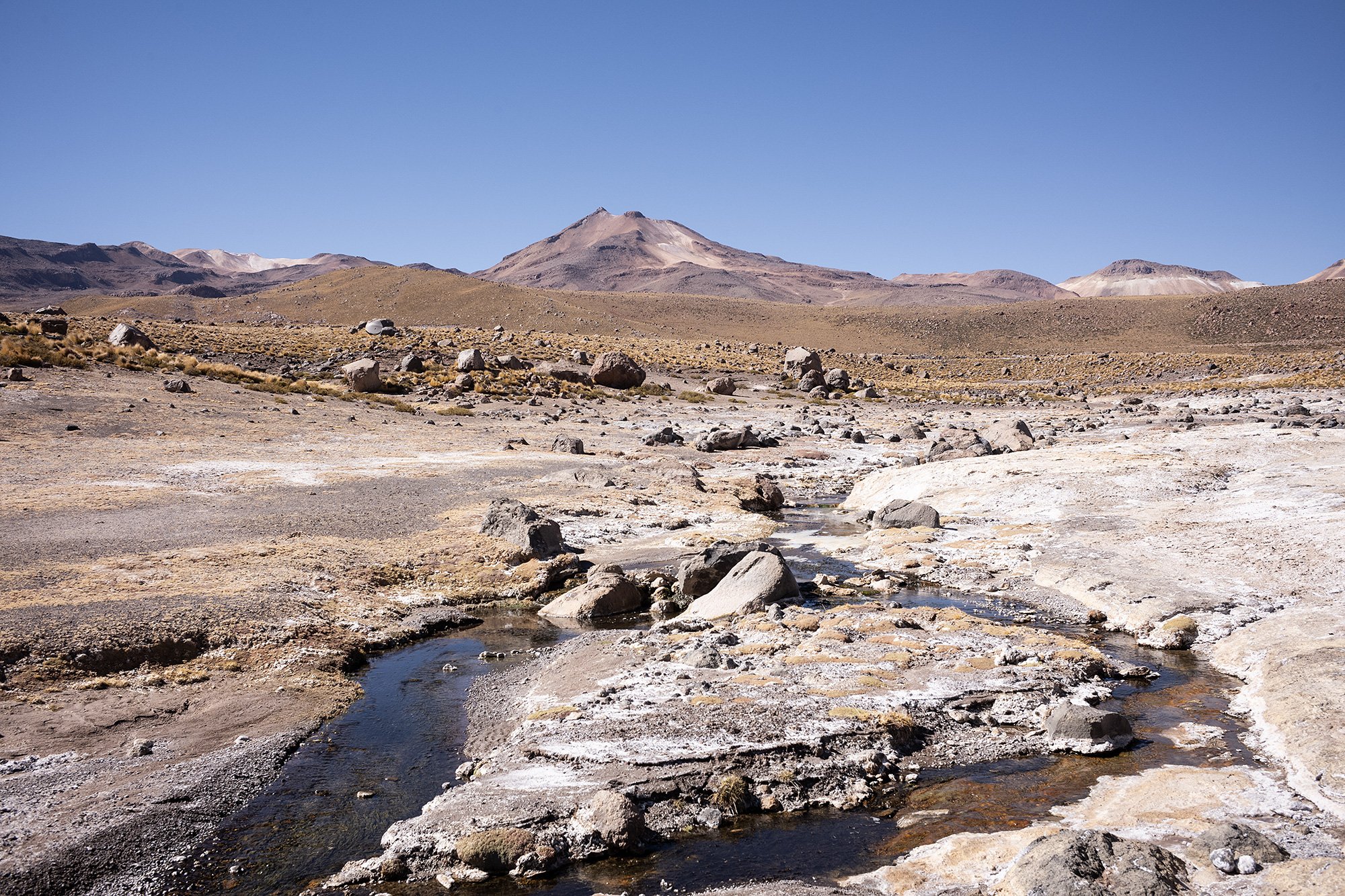
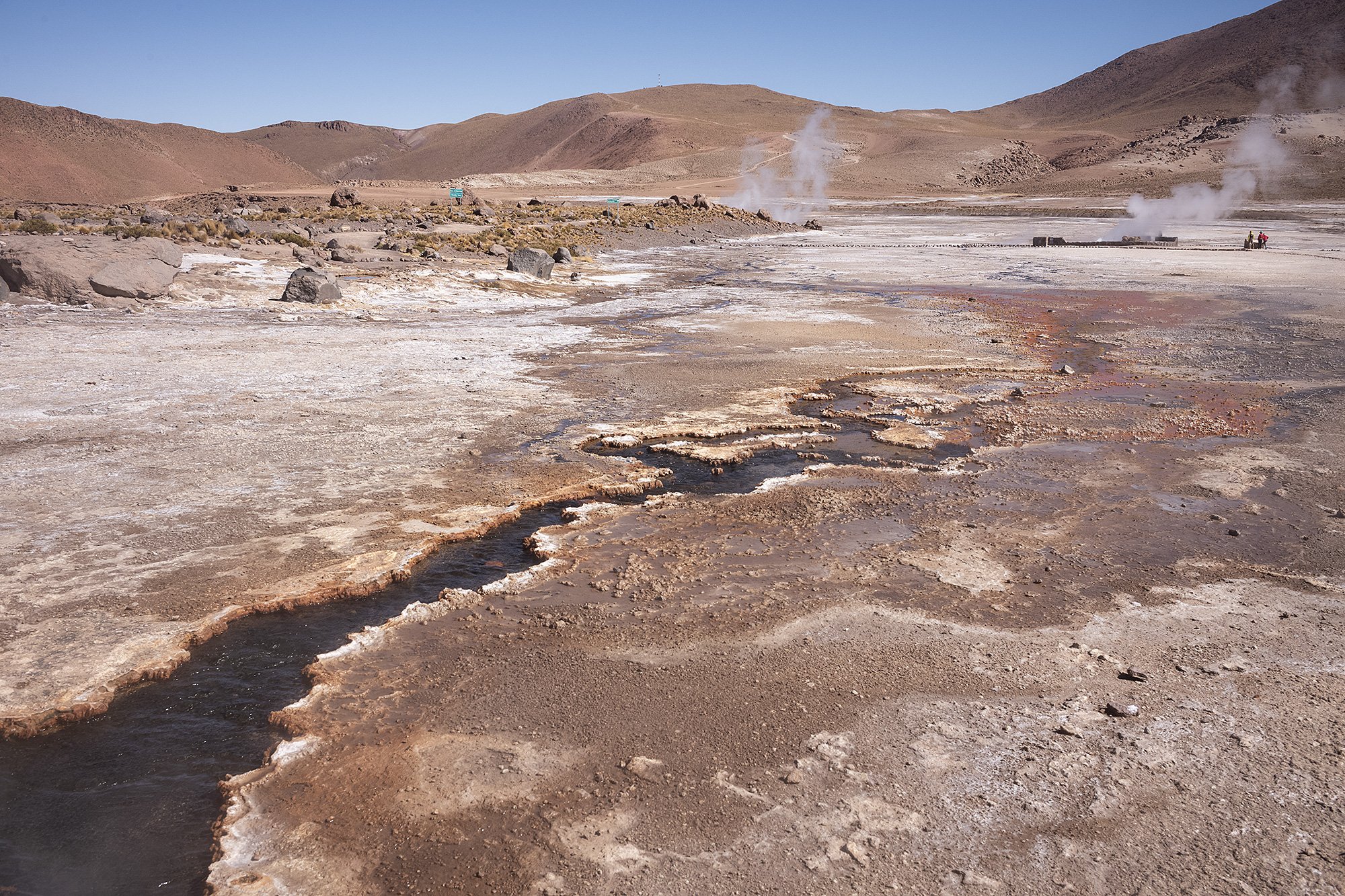
At one point Michelle points out an area that was once a pool. They mixed the hot water from the springs with cooler water and you could once swim there. It sparks a memory in Sebastian and he tells us he remembers swimming here when he was a child. Now, you can barely make out the fact that a pool once stood here until Michelle points out the benches at the far end.
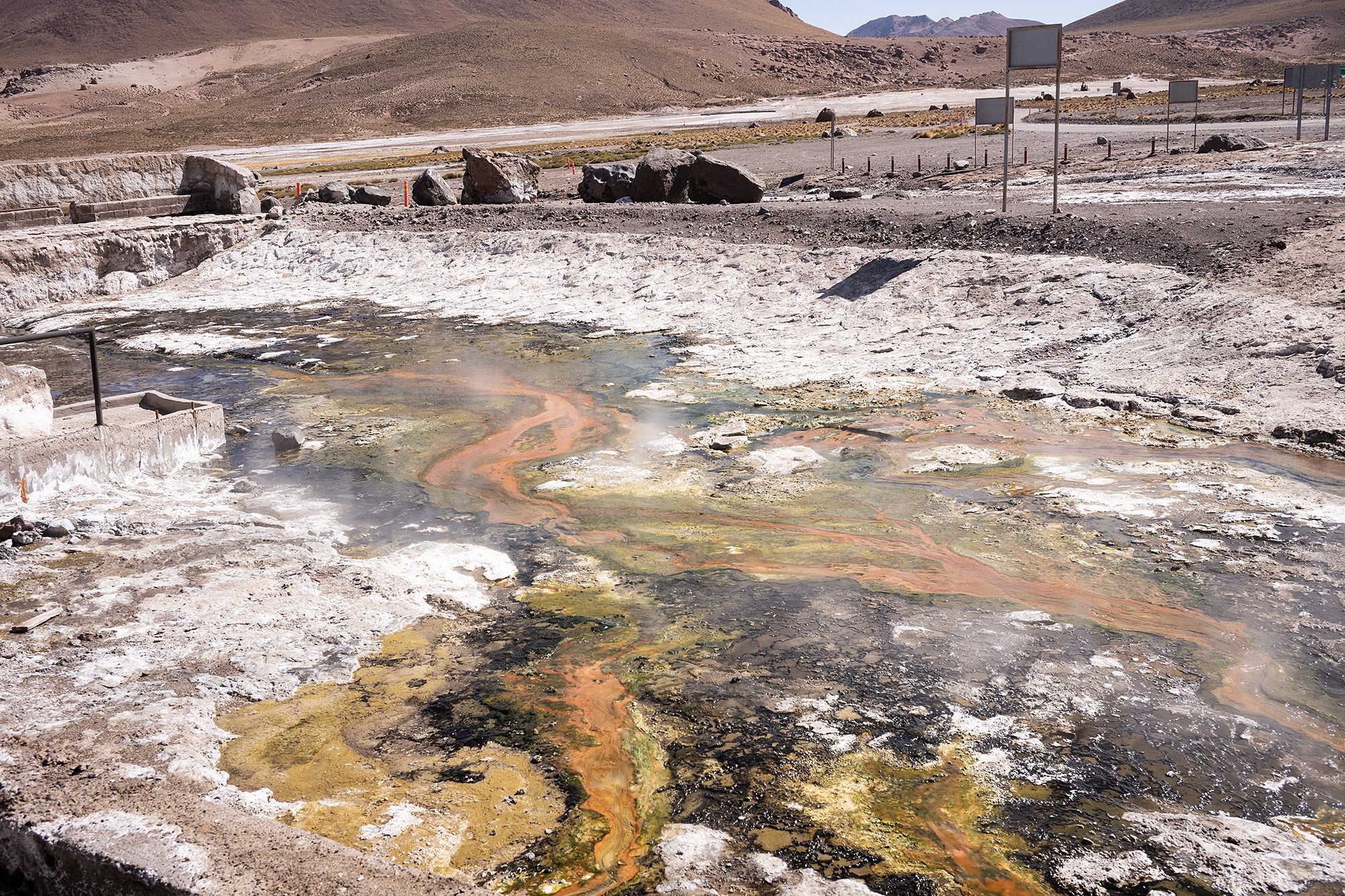
Back in the van, we climb a few hundred meters to the start of the trail. It’s a beautiful spot with views on either side of the river valley. The air cool and clear and thin but it’s a beautiful day and I’m excited to descend to the river in hopes of seeing vicuña.


Initially I think we’re to hike the valley to our right but I’m mistaken. We follow the sandy switchback path down until we reach the base of the canyon and set our sights to the left.

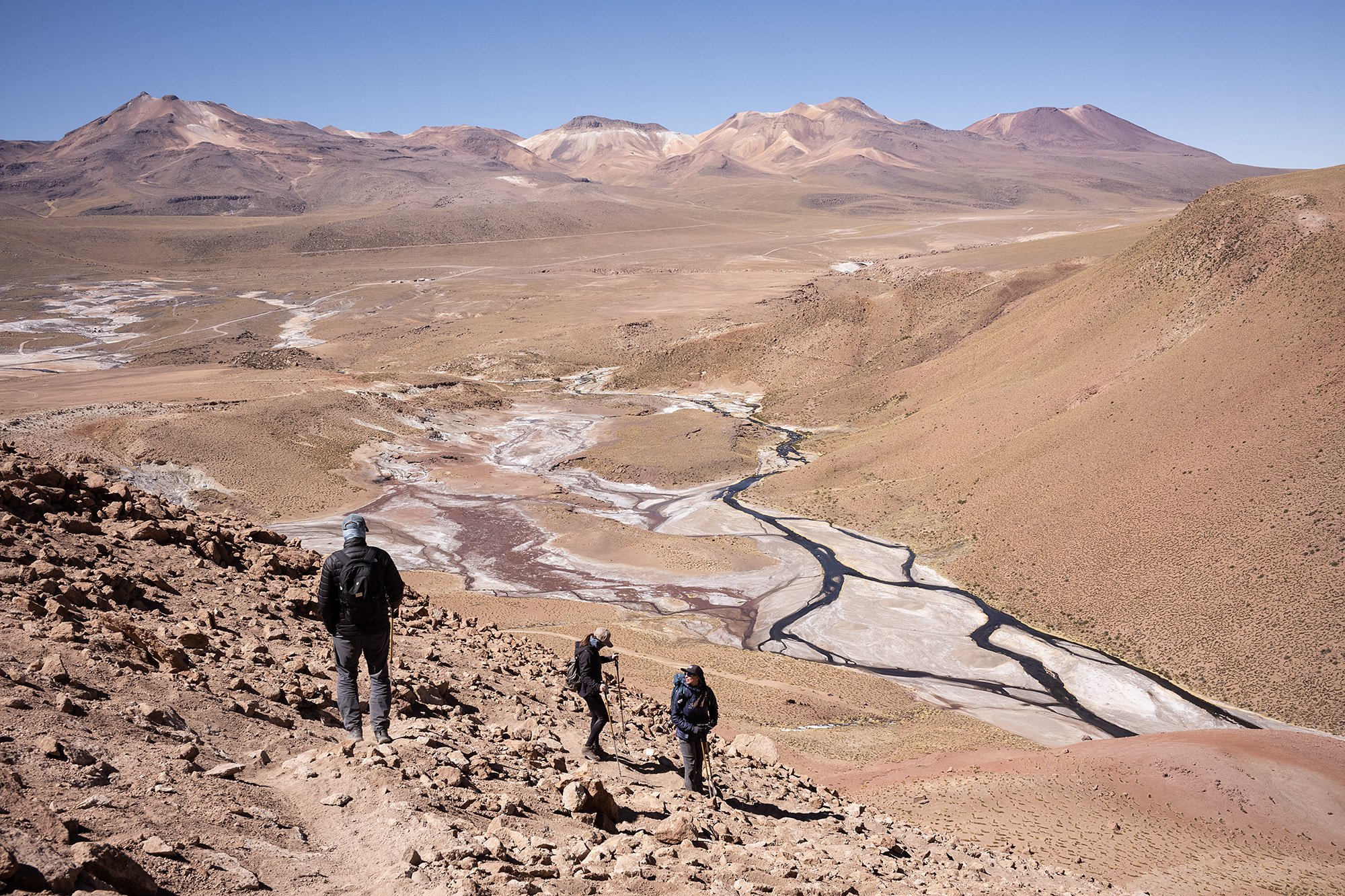

We pause when we reach the bottom to shake pebbles out of our shoes and adjust the layers of clothing we’re wearing. Two vicuña pause to drink from the river and Maria and I are both excited at our first sight of them. As we walk past they look up at us unperturbed, then continue drinking their fill.
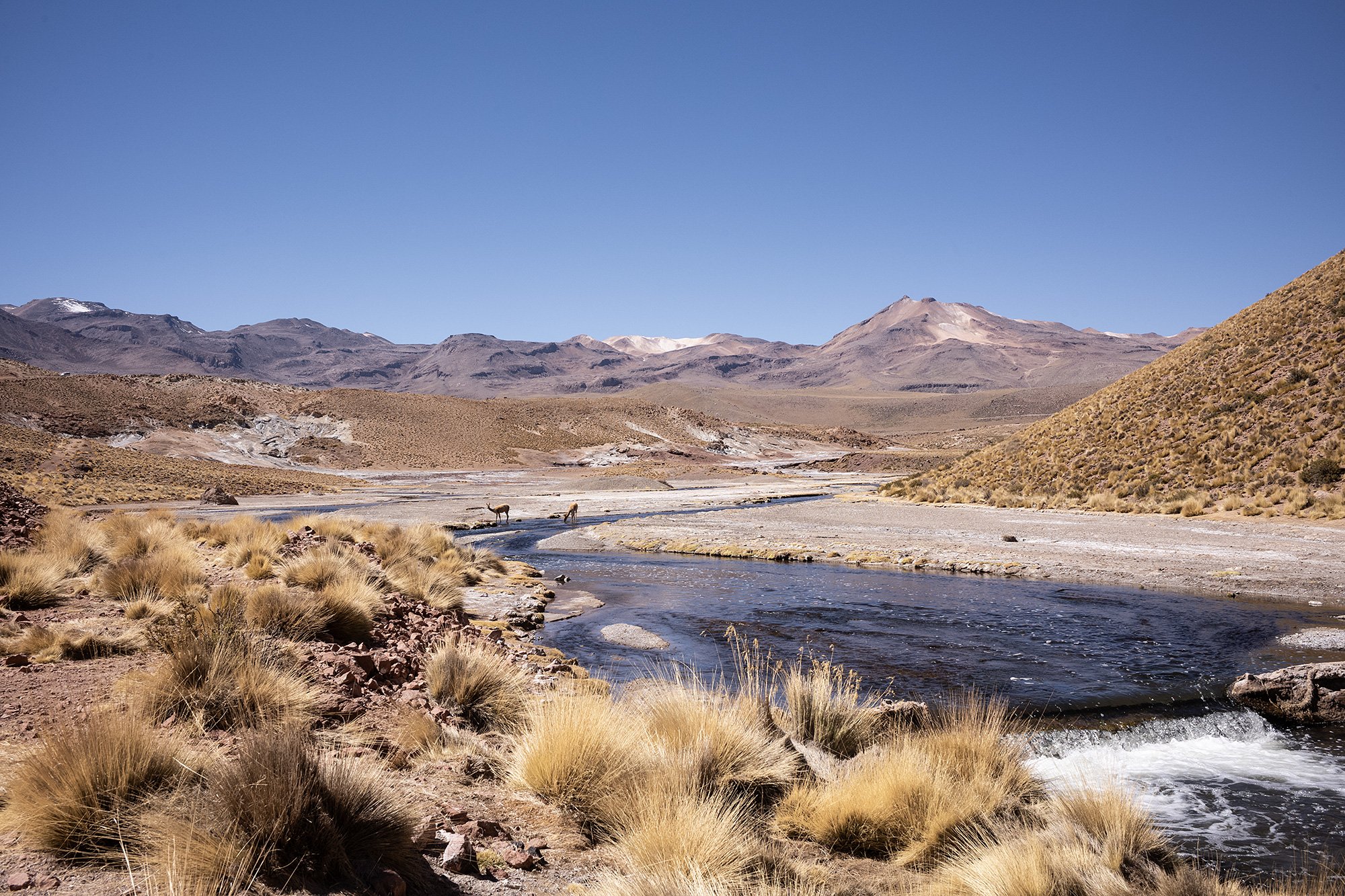

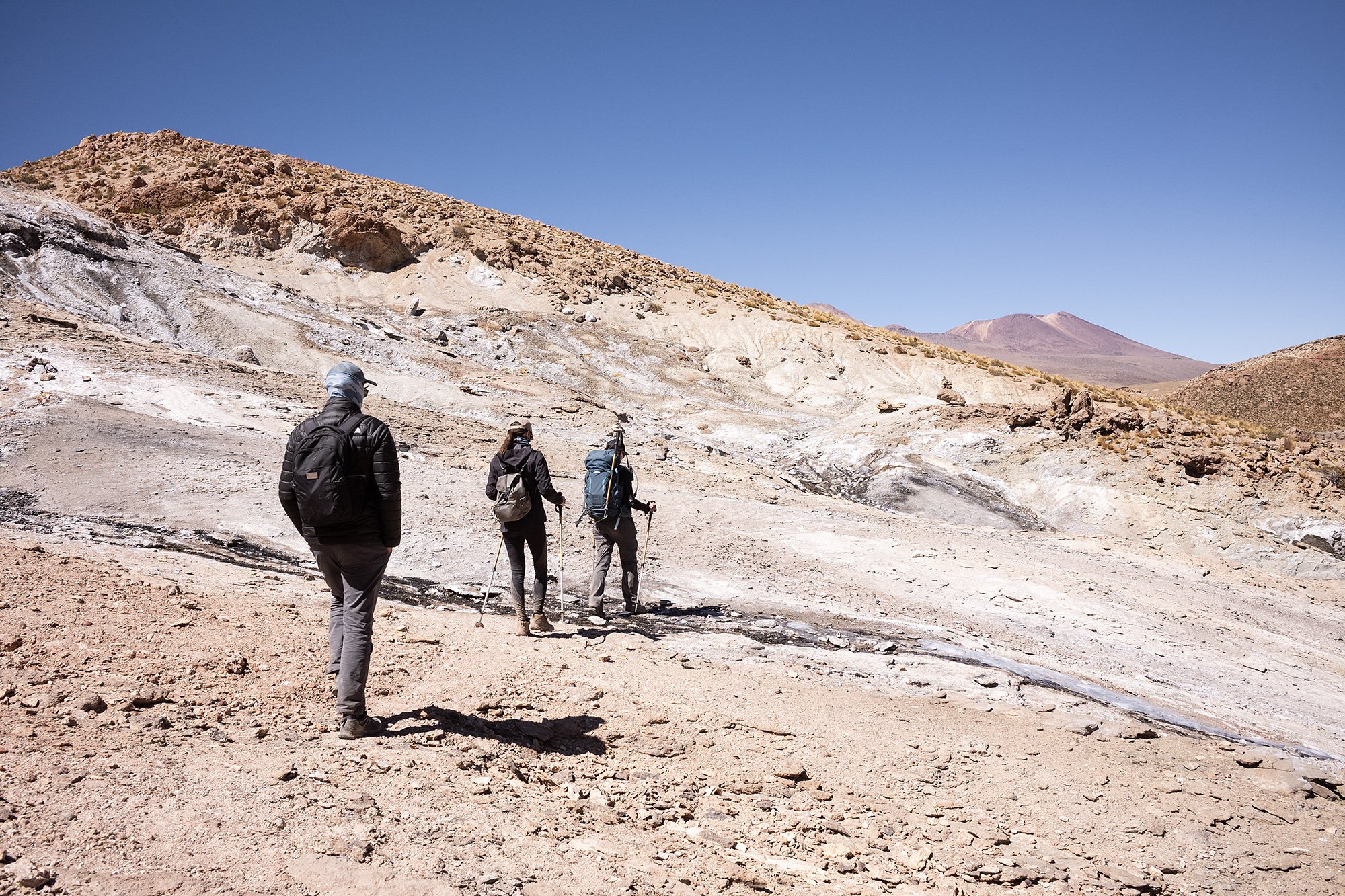

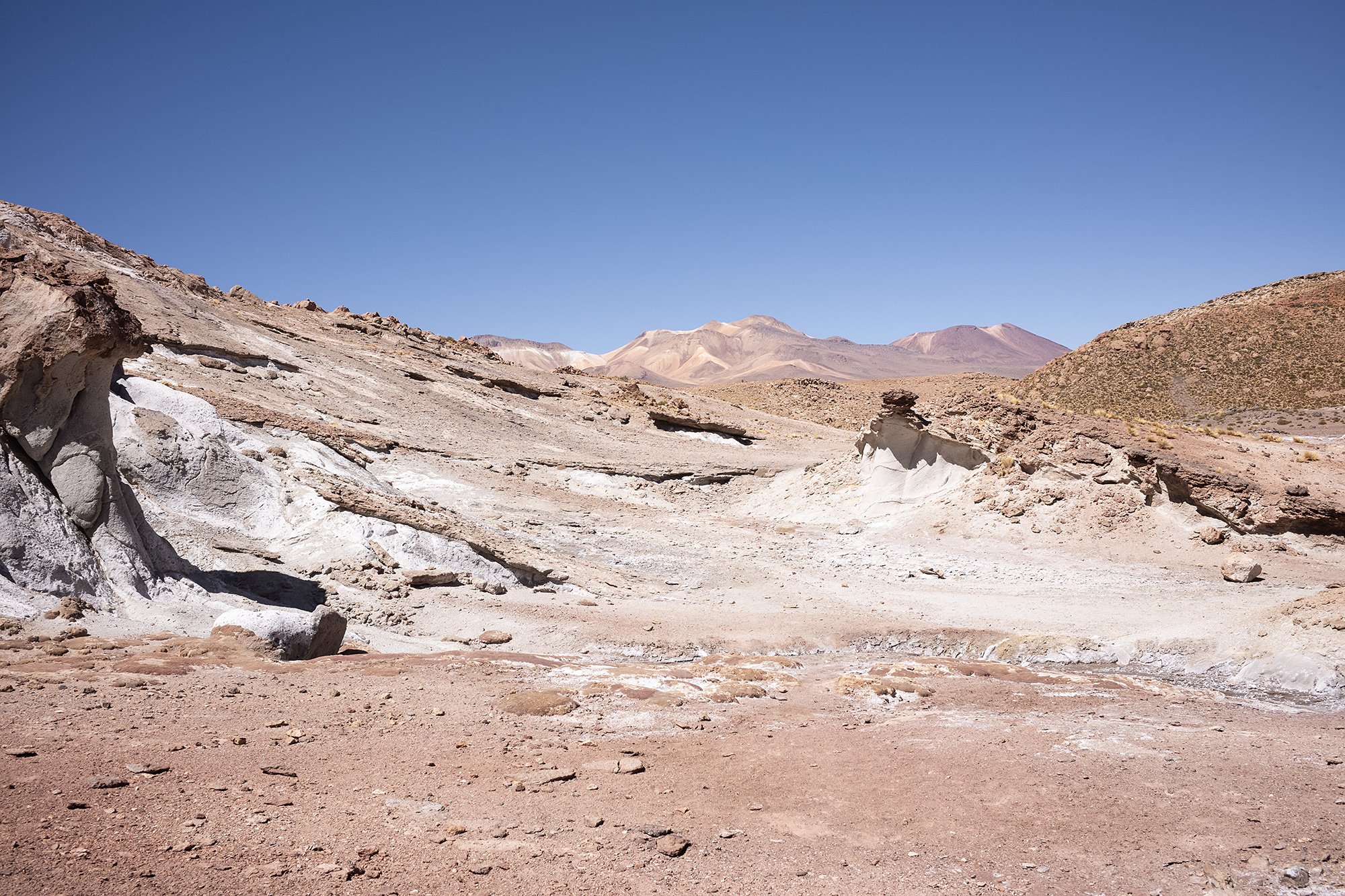

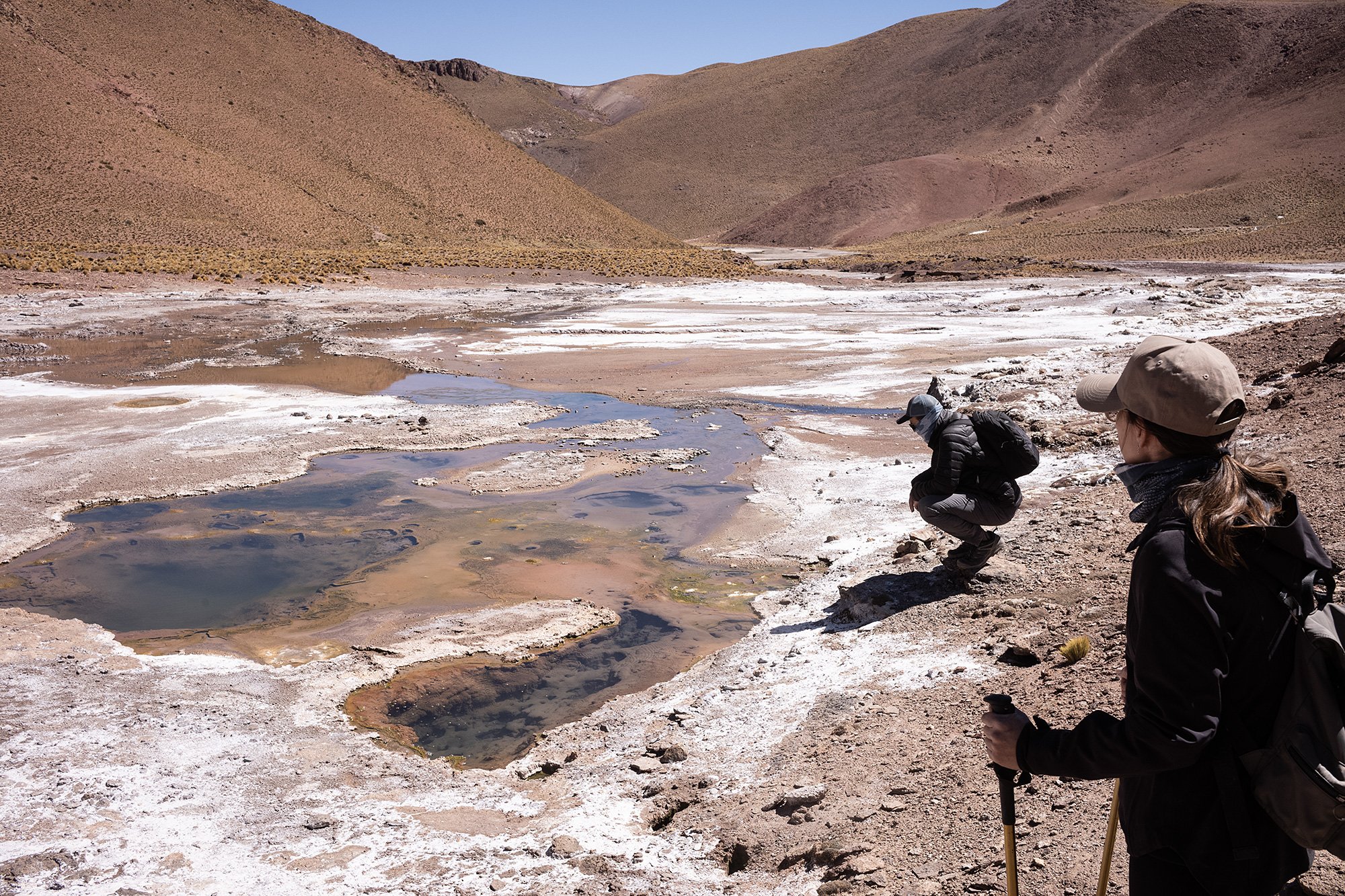
Michelle asks me about the pace and I say I’m good with it. The trail is mostly flat and rocky; the views are spectacular. Already it’s my favorite hike.
At one point, Michelle pauses to point out a small geyser bubbling by the side of the path. It’s an active geyser; the bubbles break the surface and create a small white mound of water that looks like a baby ghost. If a geyser could be called cute, I’d describe it thus.
We continue on and pause for a moment nearby. Looking back we see it erupt into a larger geyser, spewing steam up into the clear blue sky. Sebastian looks at me. It’s a good thing we didn’t linger, he says, and I agree.
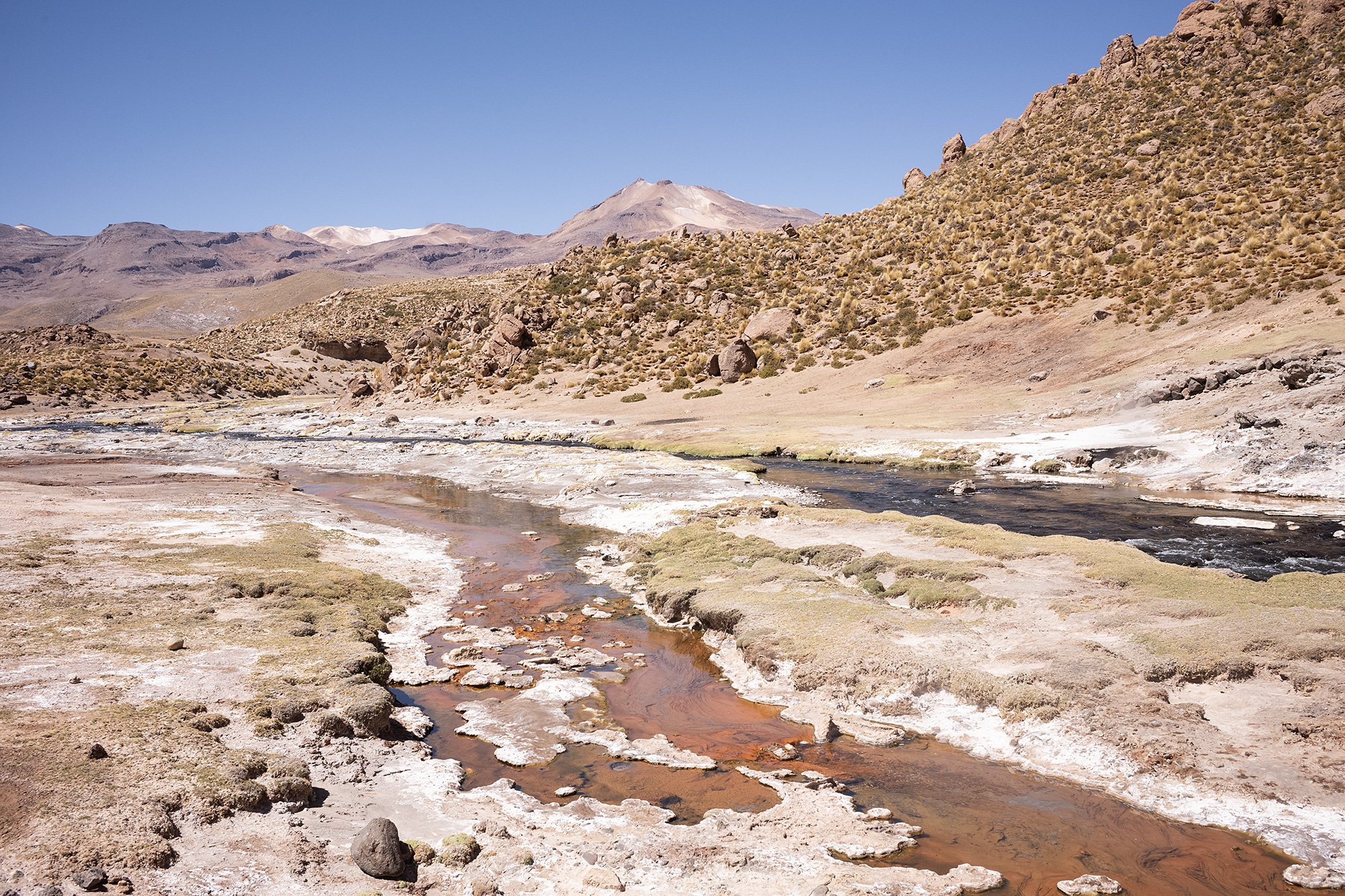
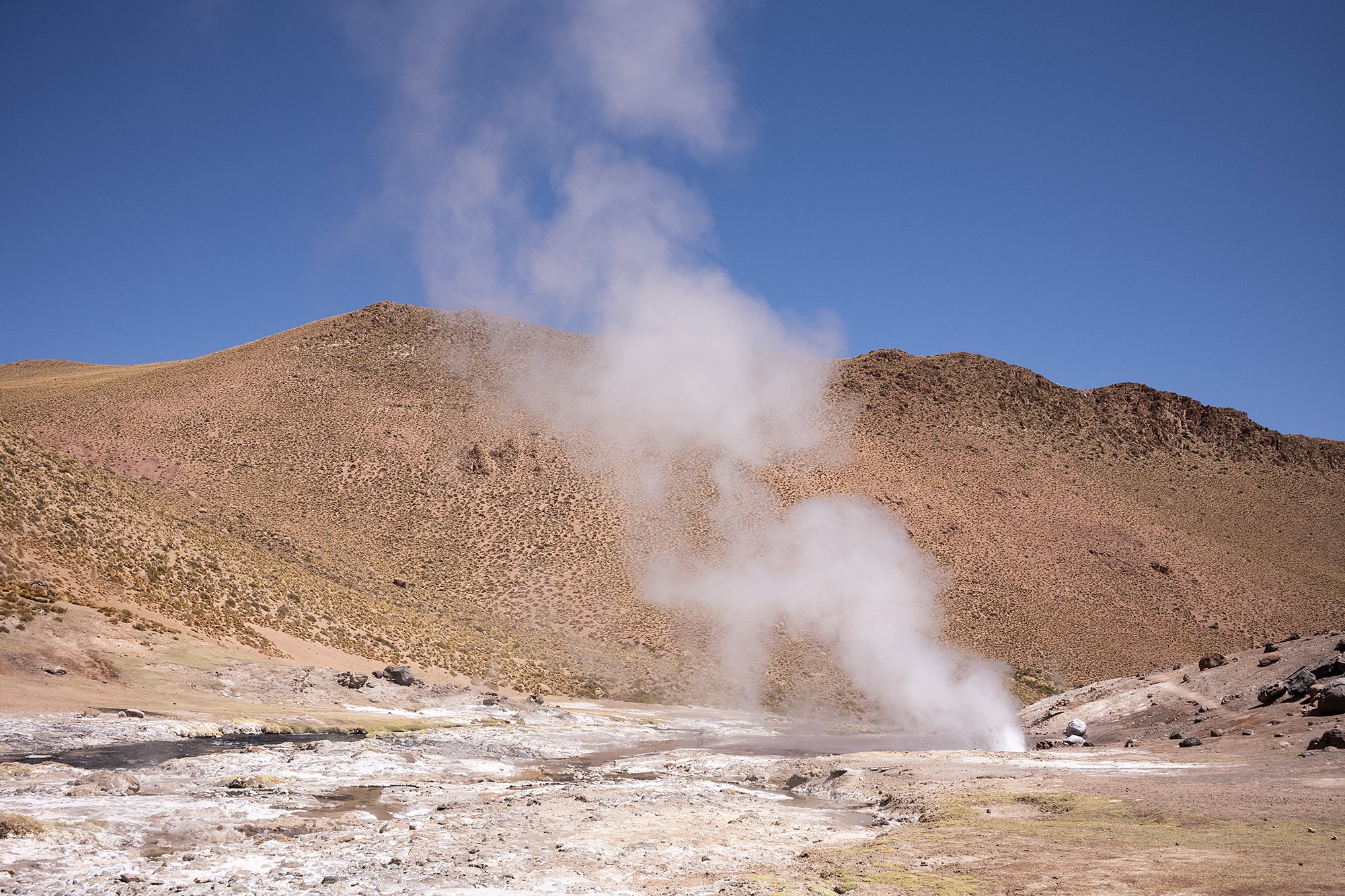



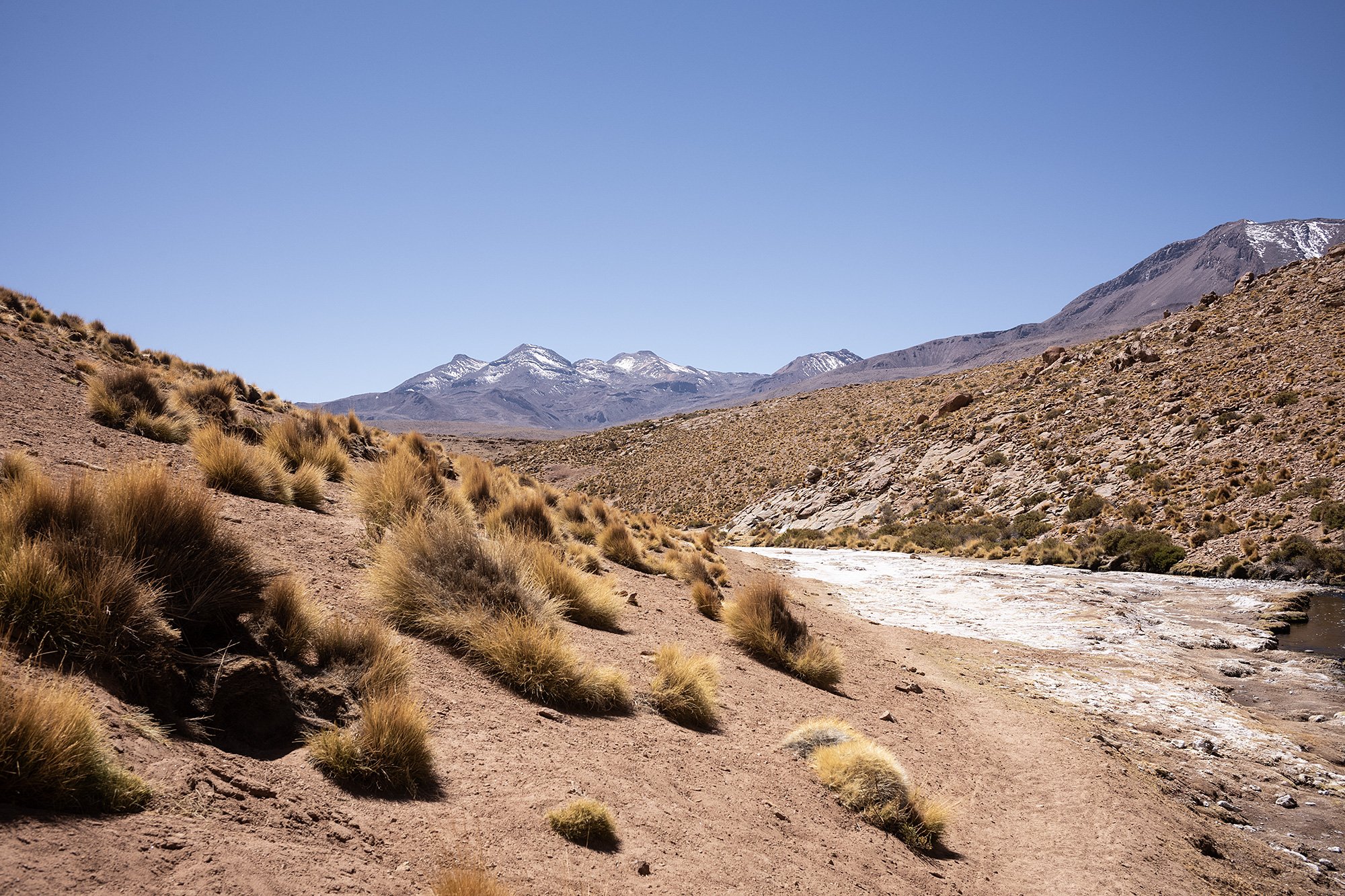
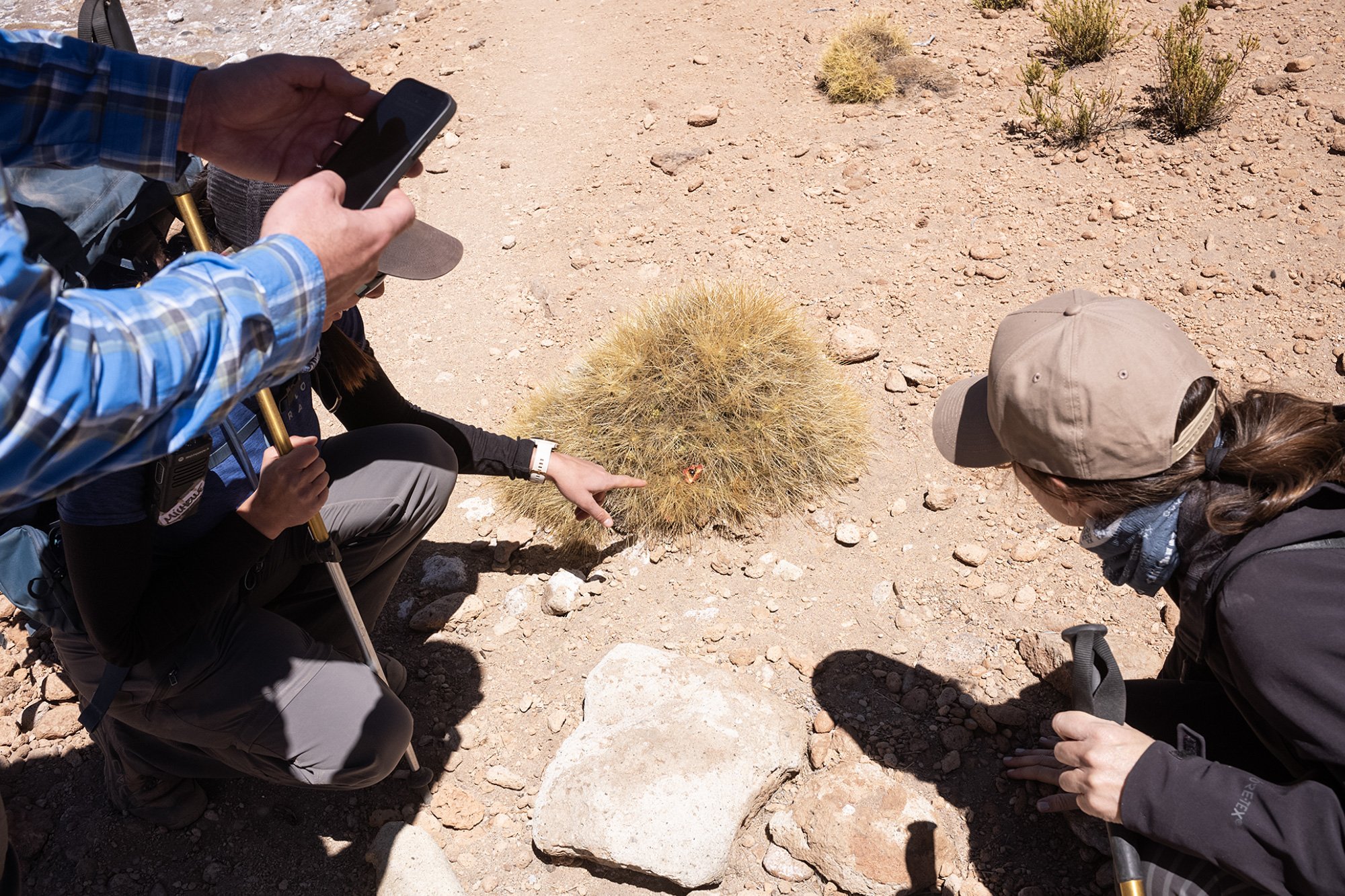
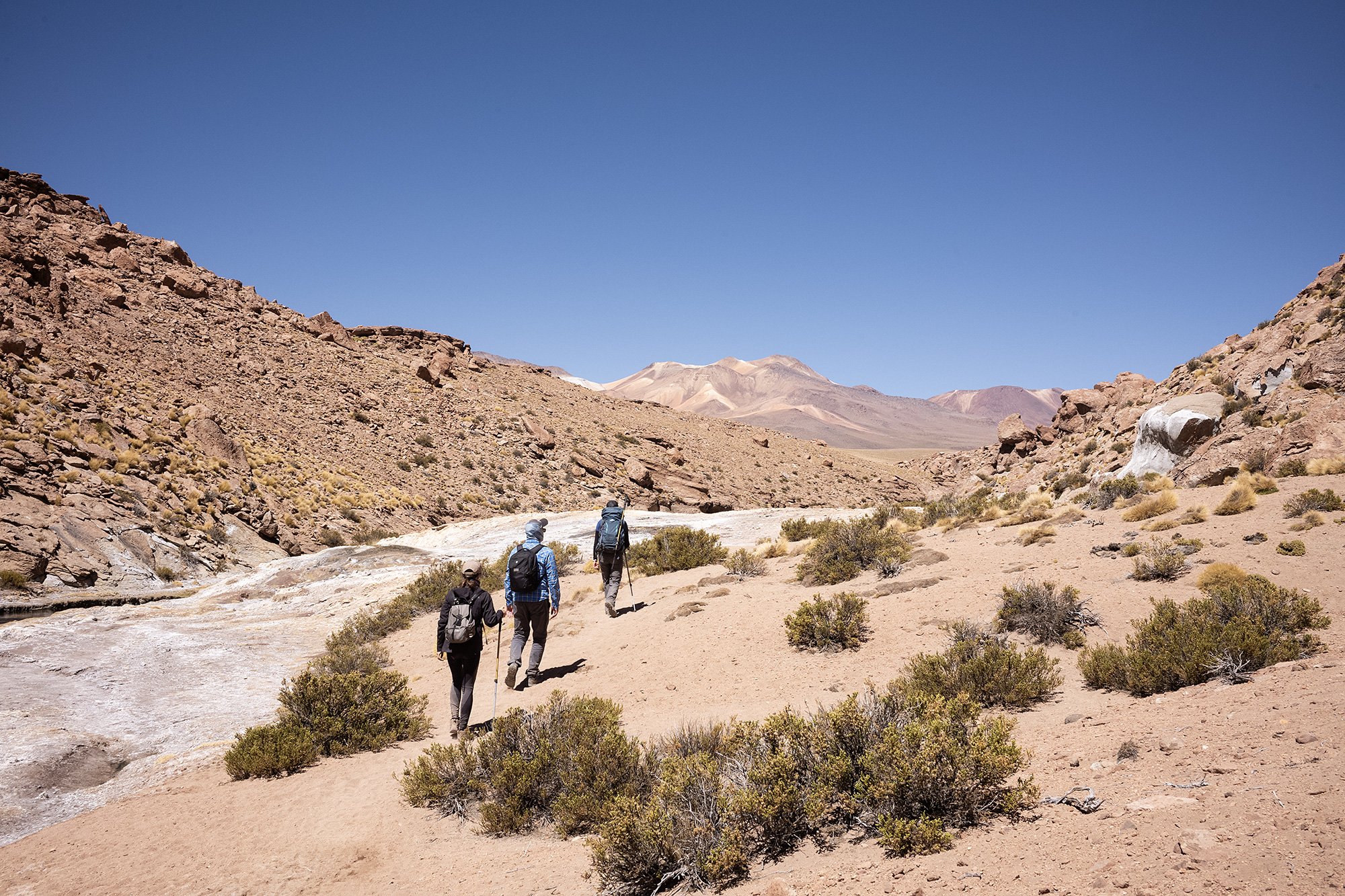
The landscape is fascinating. Michelle points out various bits of vegetation, encouraging us to crush bits between our fingers to smell it. Sebastian and I taste some of the plants; one bitter coating the throat as the bitterness spreads, one less so.
At one point she points out the green blobs that grow amongst the rocks. It looks like moss, but it’s actually a plant called llareta. The green surface is comprised of a collection of flowering buds at the end of densely packed stems. It’s a very dry and solid plant and is used for kindling; the fire burns long and hot and was once used to fuel locomotives.

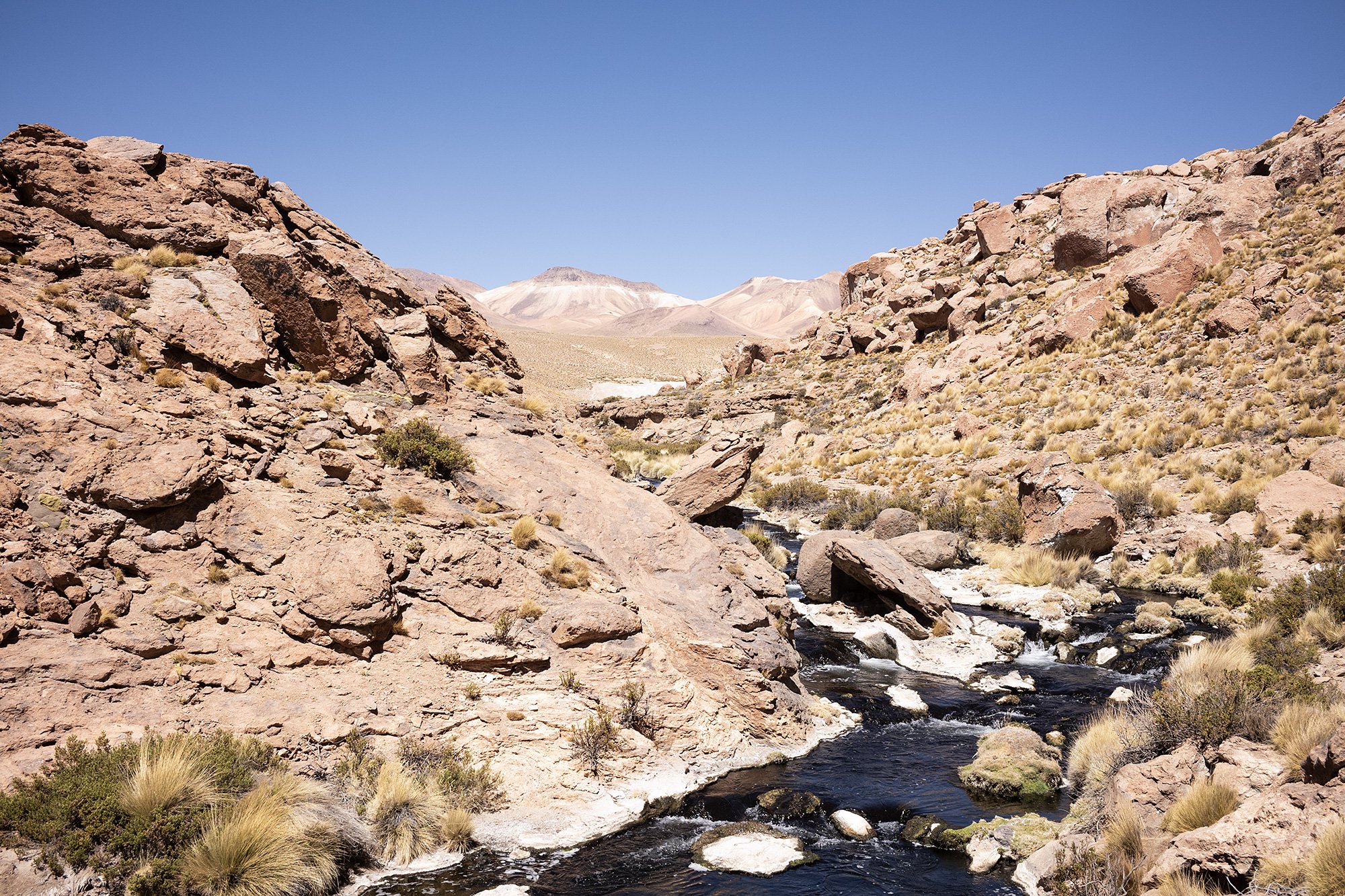
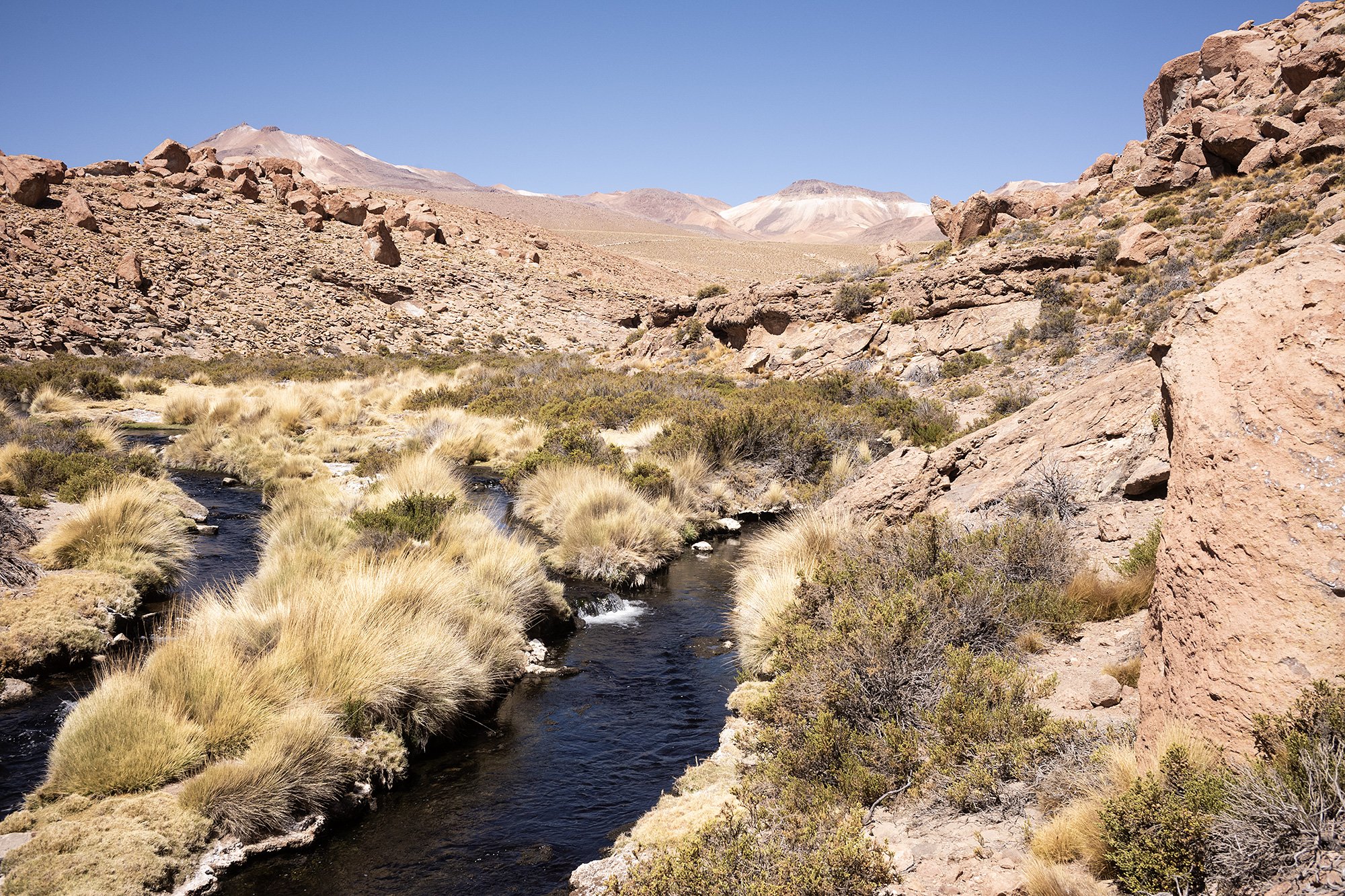

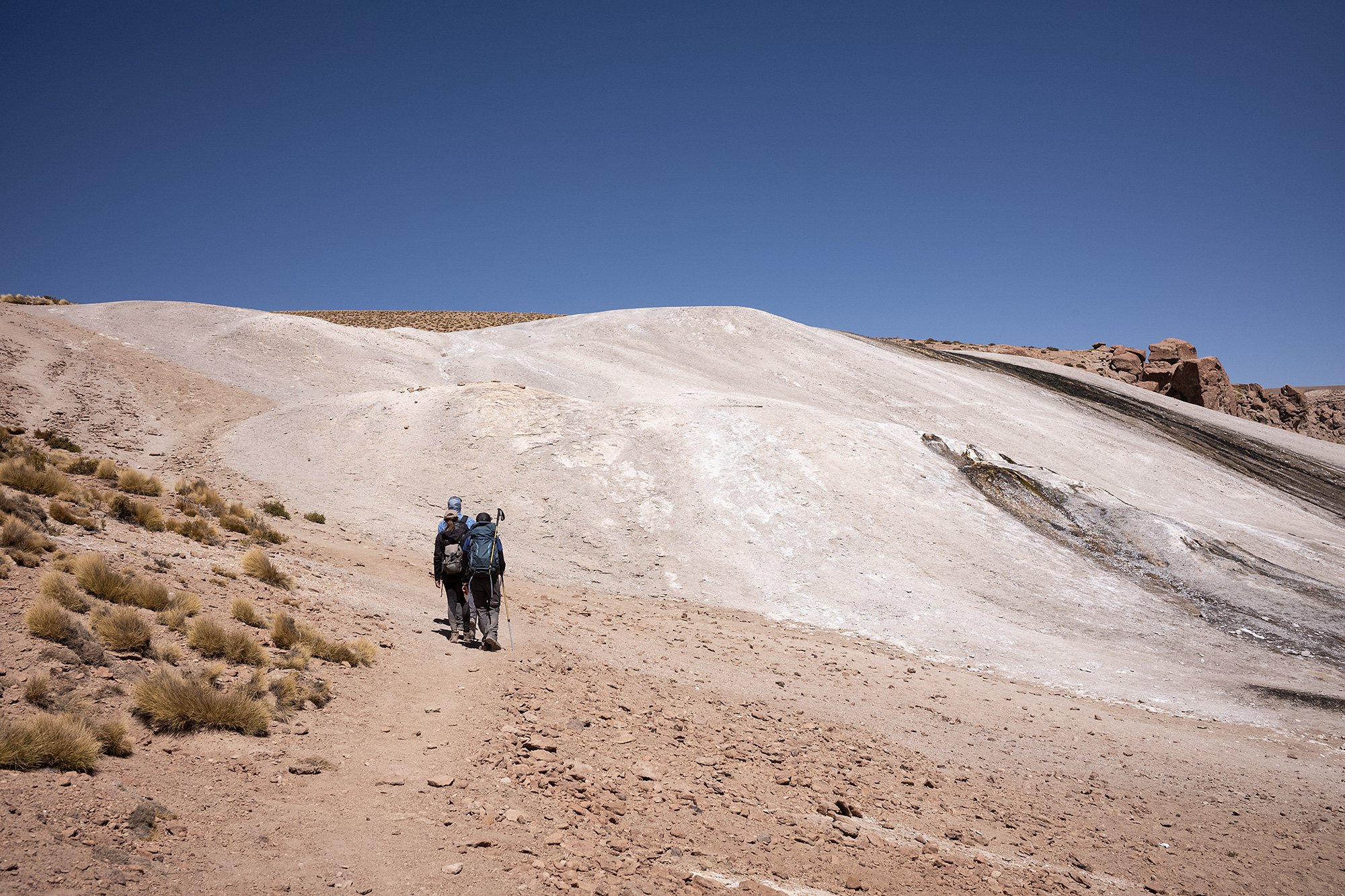
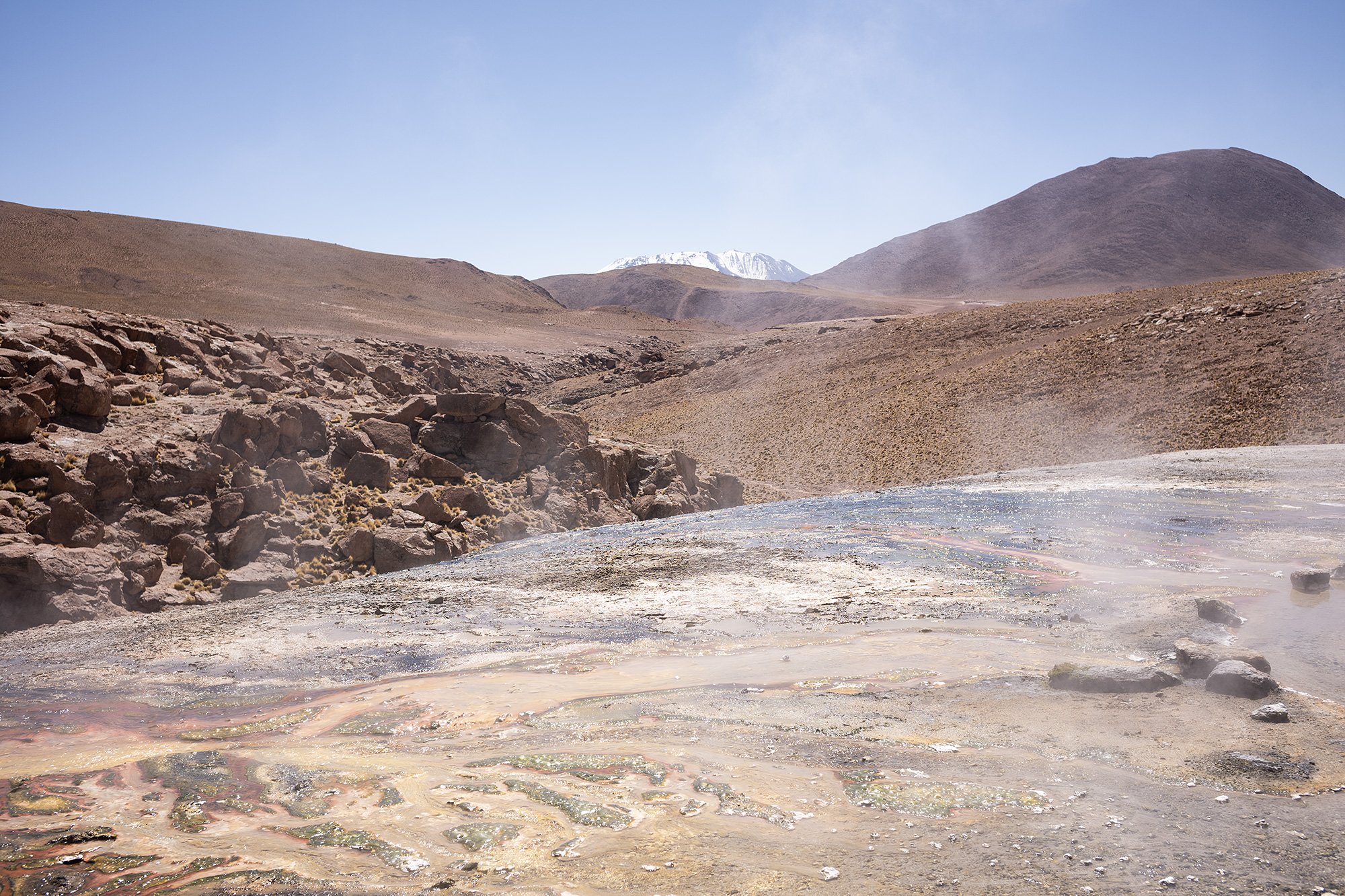
When we finally reach Volcan Blanco, I am tired. The continued activity and lack of oxygen are sapping my body of strength and I can feel my muscles tire. Michelle asks me if I’m ok and I am, save for the lethargy that has overtaken my arms and legs.
We summit the small mound of the “volcano” and stop for lunch. Michelle takes extra food out of her bag and a corn soup and sets the blanket. I’ve opted for a canister of lentils and trout and a sandwich and realize I’ve brought too much food.
Michelle offers the soup and I can’t turn her down as she’s humped it all this way. It’s delicious. I slowly eat my lentils, savoring the fish while sipping on the soup. It’s a beautiful spot with views of the snow-capped mountains in the distance.

Descending from the “volcano” we continue walking along the stream. We spot more frogs in the water and stop to take a photo of an especially large one that has unfortunately died by the banks. Maria spots it first, documenting it for her book.
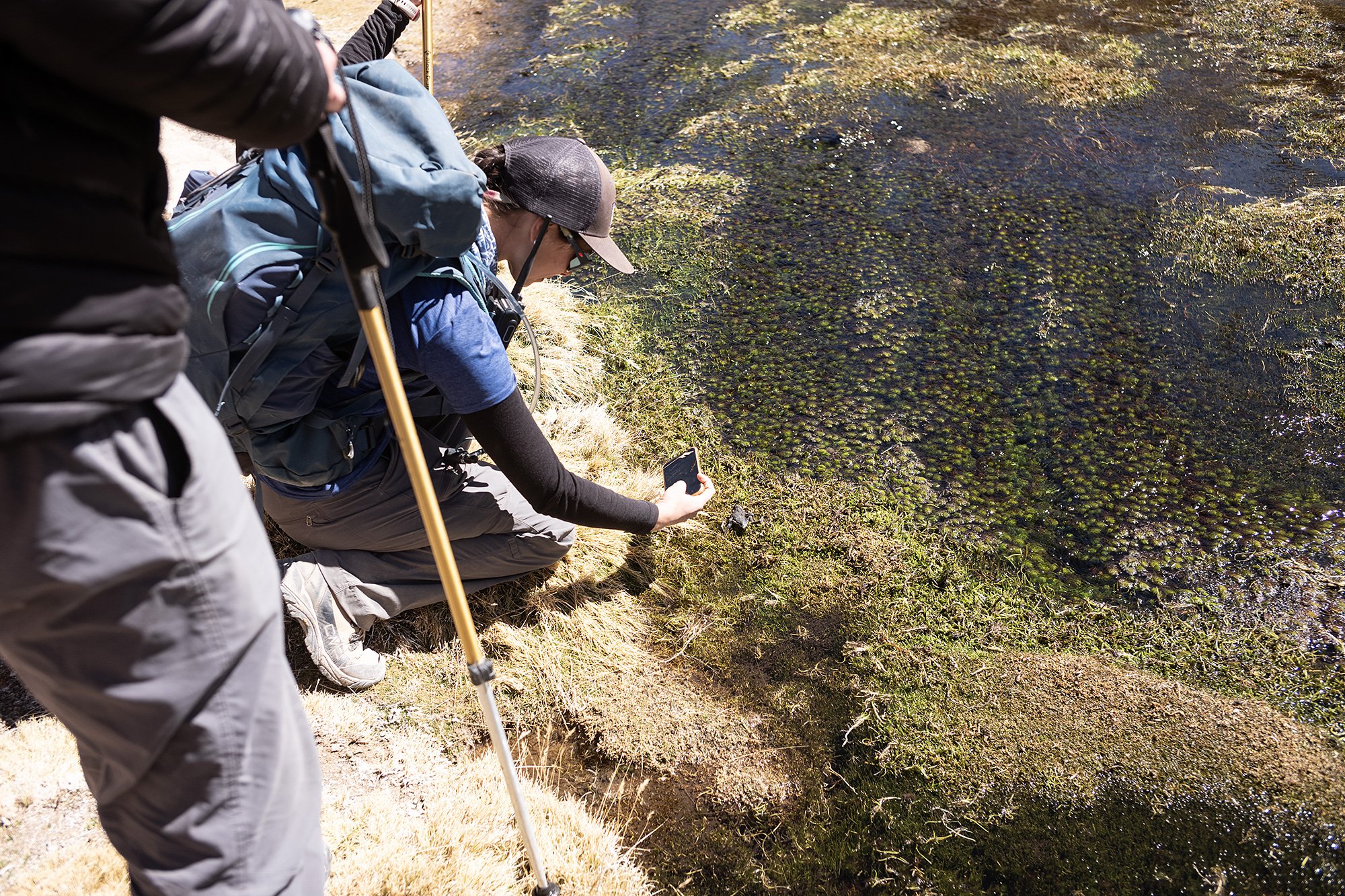
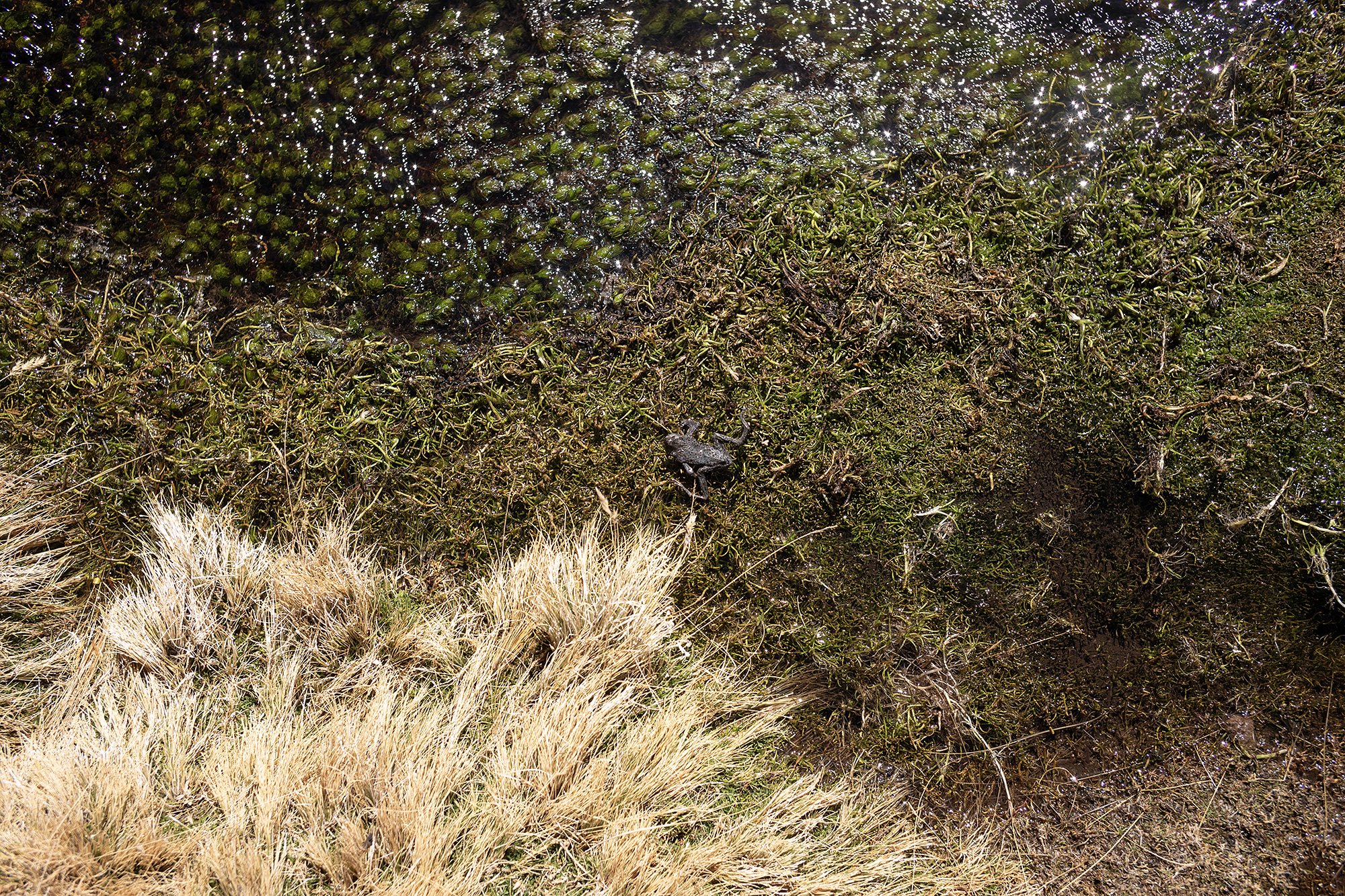
As we continue walking we find larger groups of llareta. It’s a beautiful plant; the texture is completely different than one would expect and it quickly becomes one of my favorite examples of flora in the desert.
Wee also catch sight of vizcacha hiding in the rocks. Rabbit-like rodents, the vizcacha watch us as we pass, hopping away if we get too close or exhibit too much attention. Now and again we can find small families resting in the shadows.
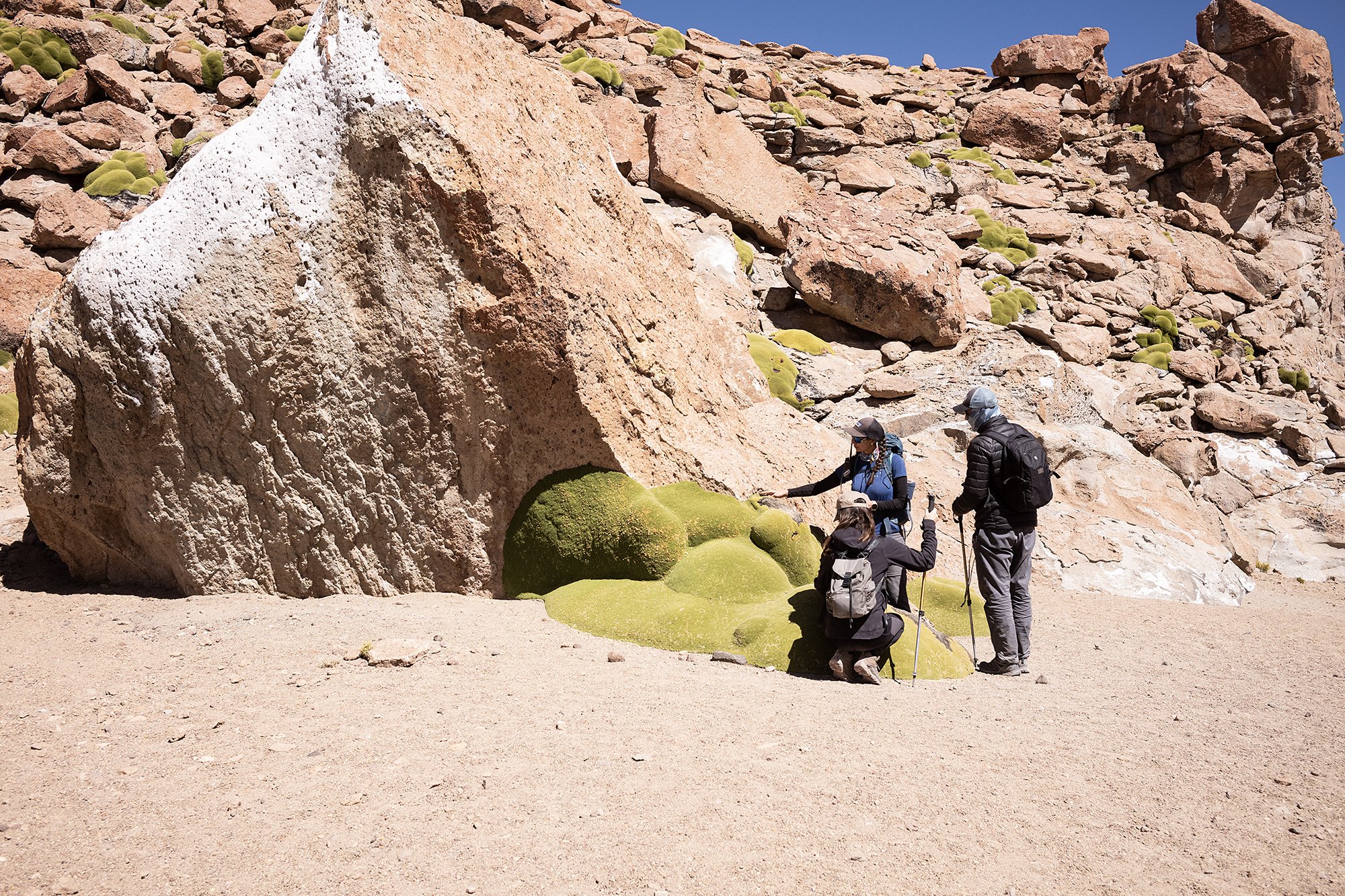

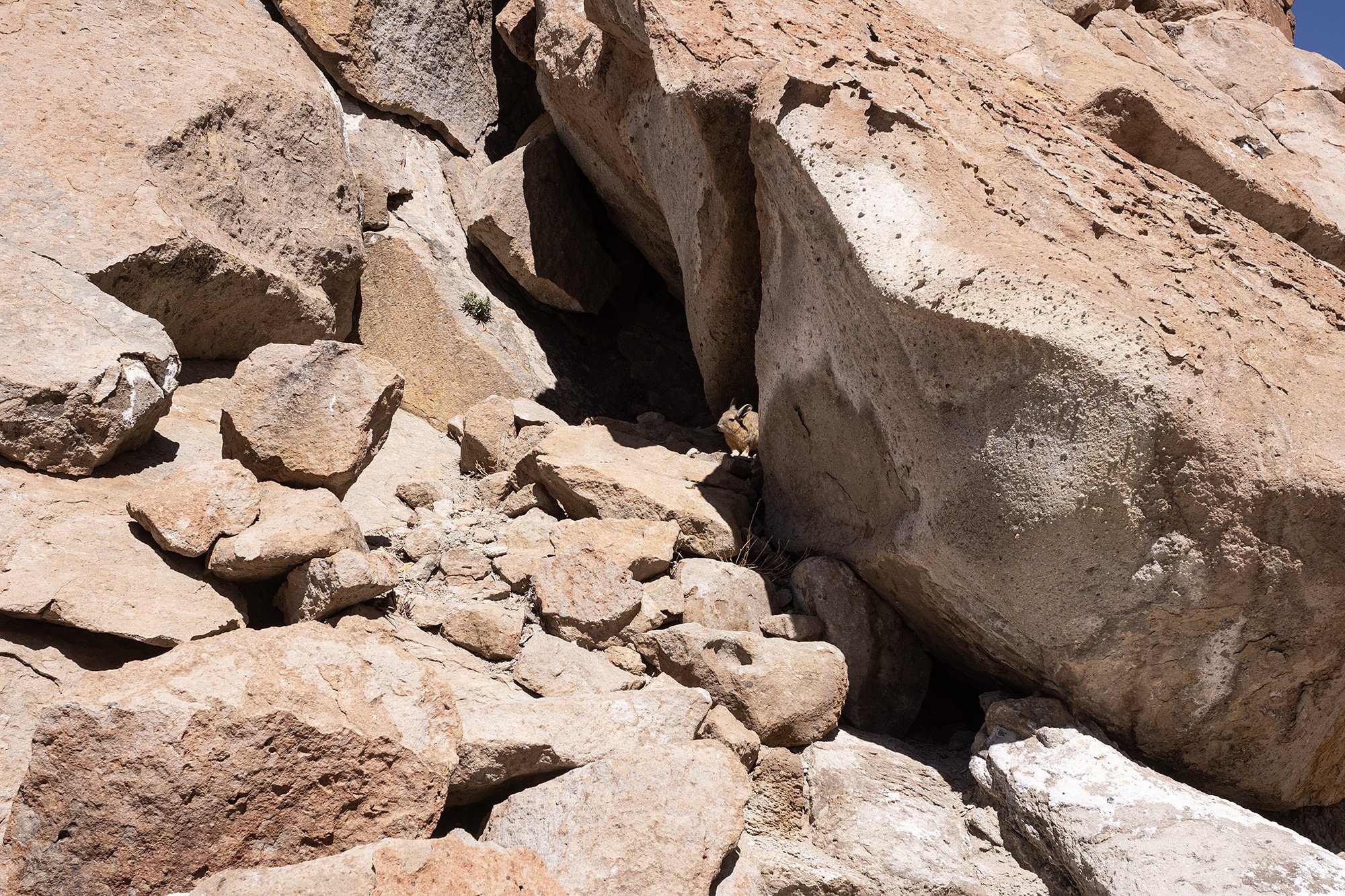
As we round a corner to a more verdant area of the valley we once again find ourselves amongst groups of vicuña. The ground is marshy in spots and the vicuña take advantage of the water and of the grass that grows along the banks.
Michelle asks me how I’m doing and I assure her that I am ok. She offers words of encouragement.
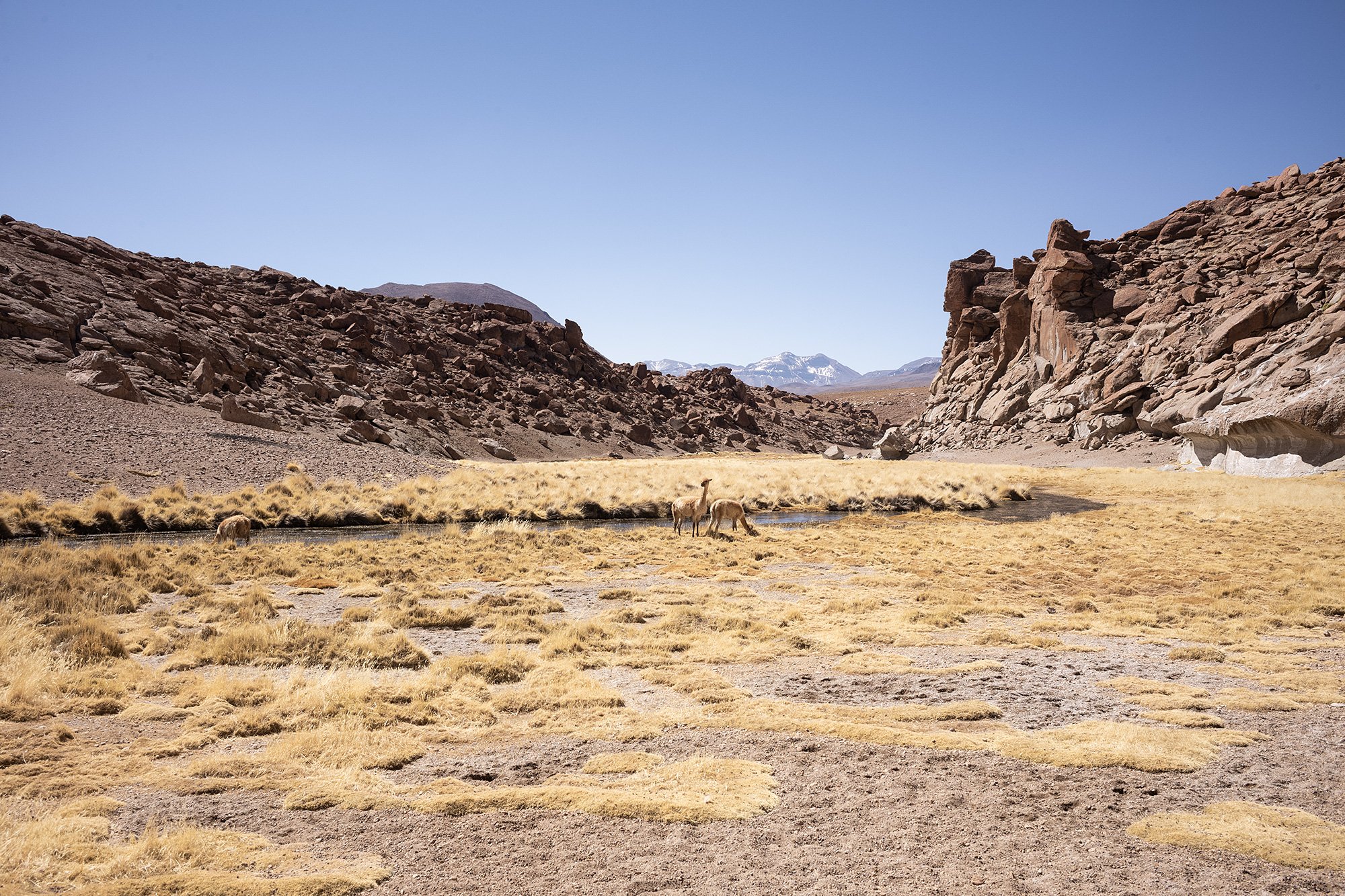



Michelle pauses at a point in the path and has us climb to a cave overlooking the valley. The cave has been made into a shelter and she encourages us to look inside but not to share what we see until we’ve all had a look.
Inside there are bones and the furry remains of vicuña. She tells us that puma will take their kills and hide them in the cave. It looks like humans haven’t habituated it in some time.
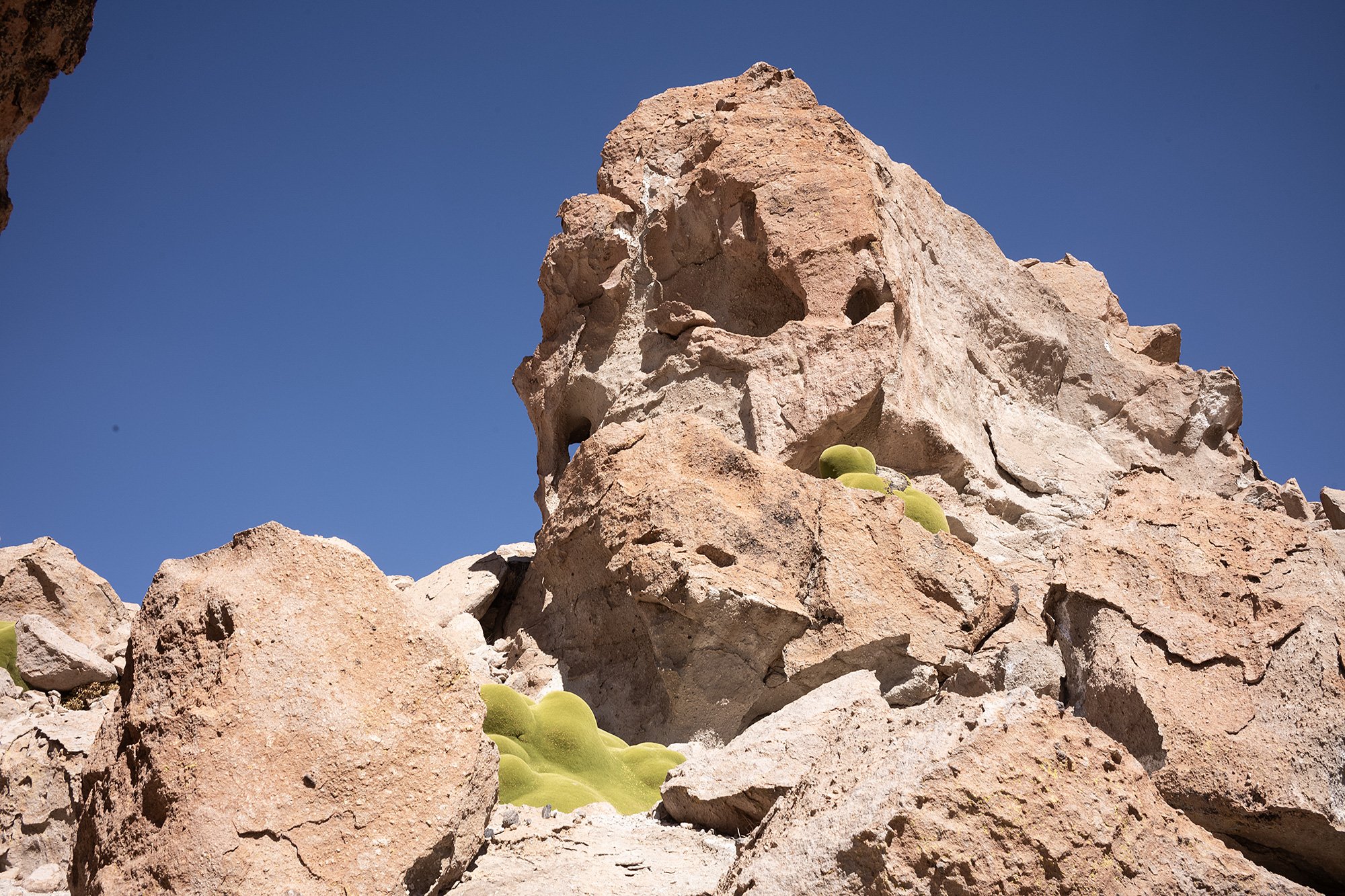


From there it’s not much further to the end of the hike. We cross the marsh, hopping on tufts of grass here and there. I misjudge one tuft and my foot sinks into the water. Fortunately, we soon spot the van sitting in a sandy lot a little ways away. The chill wakes me up and helps me complete the final stretch.
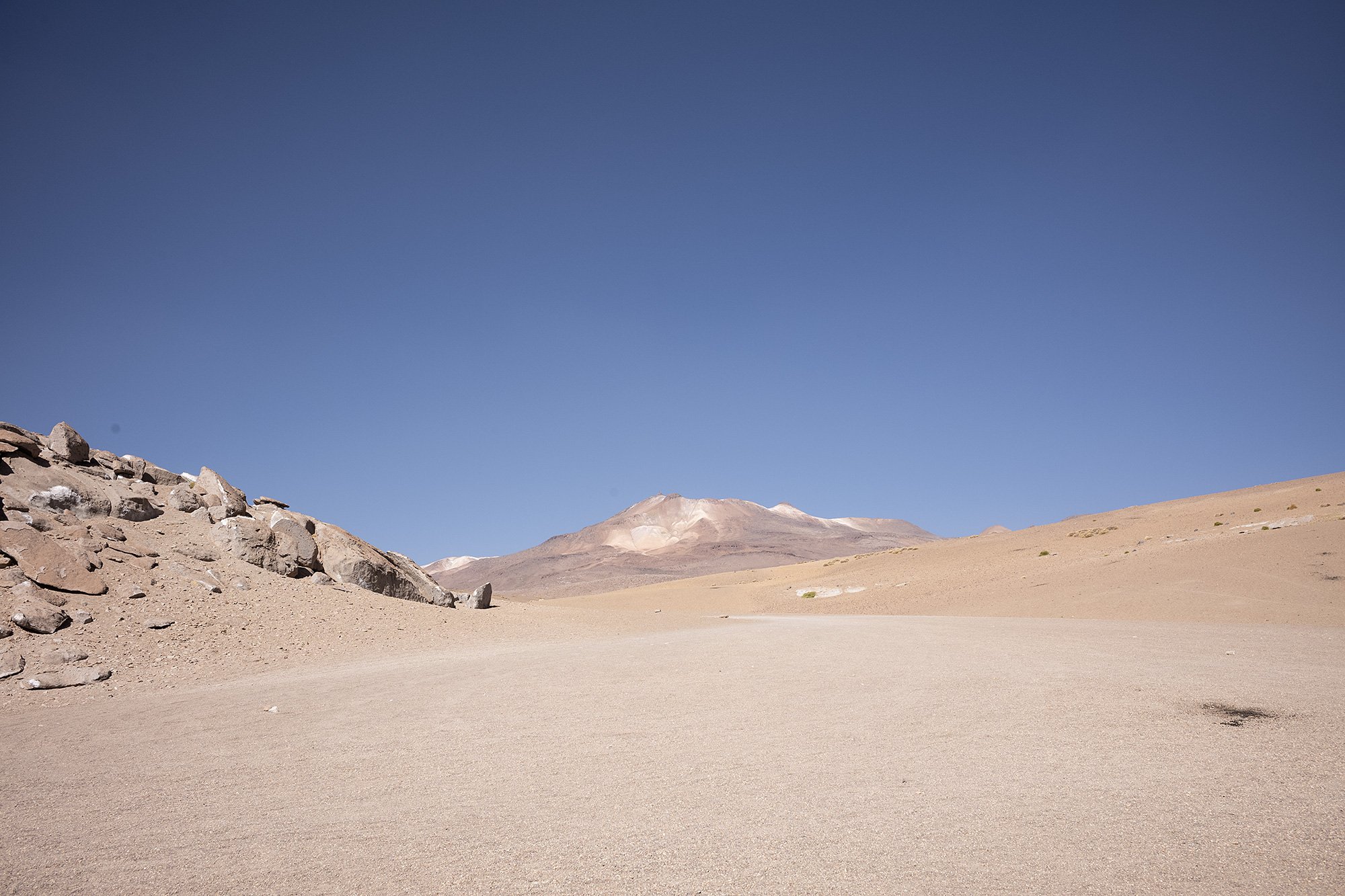
At the van, the usual spread of snacks and drinks await us. Andean gulls soon circle around us, mock diving to get at the food. Michelle waves them off and we cut our repast short before more start to swarm.
In the van I listen to Sebastian, Maria, and Michelle chatting in Spanish. The sounds lull me to sleep; the desert that passes by the window blurs before me. My mind mulls over the hike we’ve just completed and the beautiful valley we’ve traversed.
I had asked Michelle what her favorite excursions are; she tells me they’re all the ones near the water. This is one. For me, it’s been one of the most difficult journeys due to the altitude; it’s also been my favorite destination in Atacama.
2 September 2023
🇨🇱





